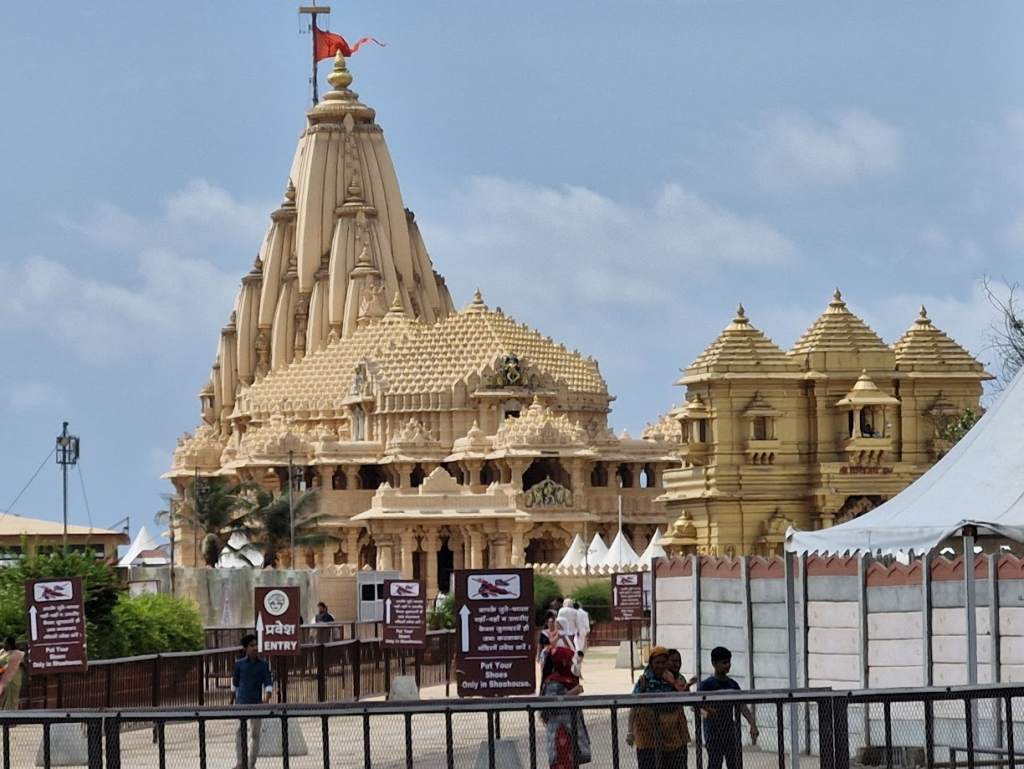
We did a trip a 6 day trip to Saurashtra covering Rajkot, Jamnagar, Dwarka, Beyt Dwarka, Porbandar, Somnath, Diu, Gir National Forest, Girnar, Junagadh. It was a short but wonderful trip before the reunion.
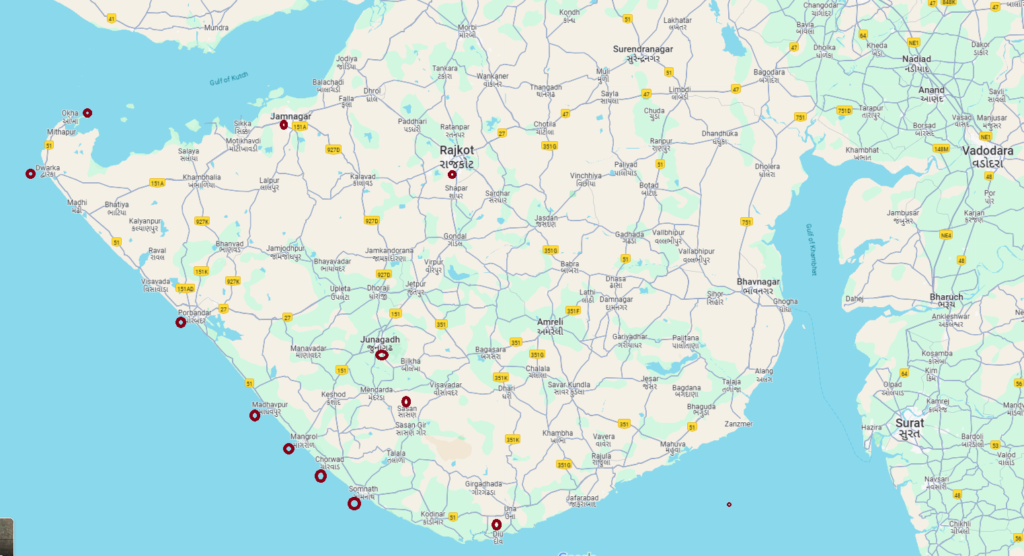
Day 1: Sat, Oct 19: Rajkot, Jamnagar, Beyt Dwarka
We arrived in Rajkot by Hapa Duronto from Mumbai reaching at 9.05 am. It was a very comfortable train journey, just 4 stops between Mumbai and Rajkot. Lata Jethwani (my sister Swati’s doctor classmate) picked us up from the railway station and took us home which was 5 mins away.
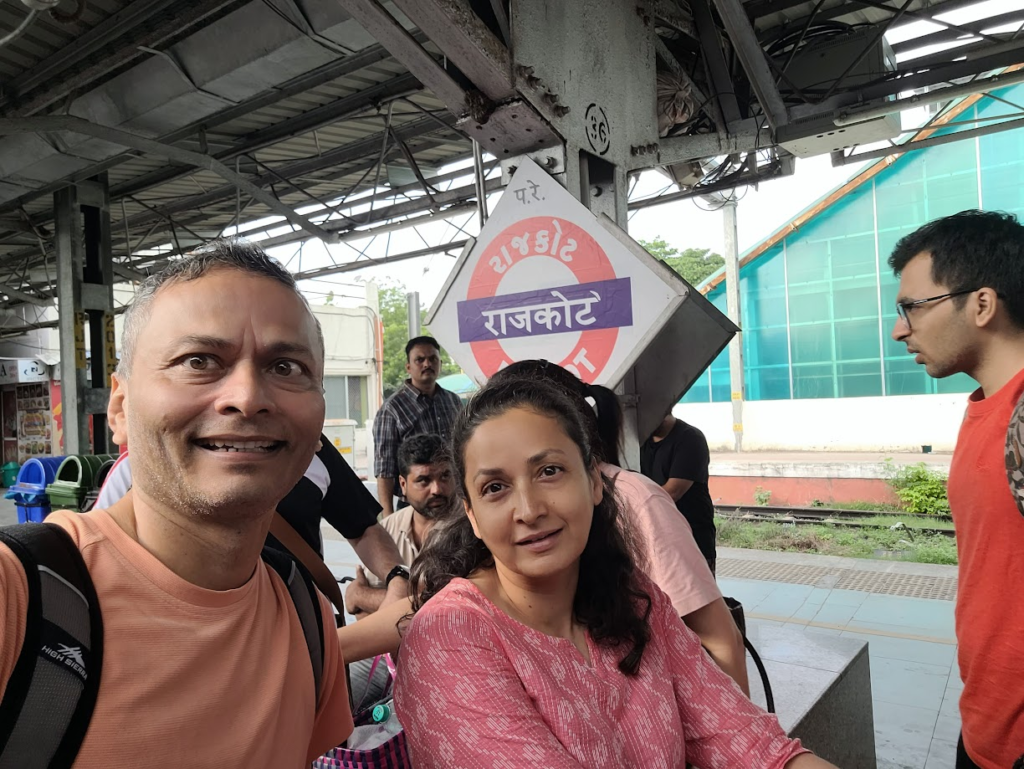
We had jalebi and fafda breakfast, took a bath and started driving to Jamnagar at around 11 am. Lata was kind enough to let us use her car for the entire trip. We had hired a drive Ashvin for the trip.

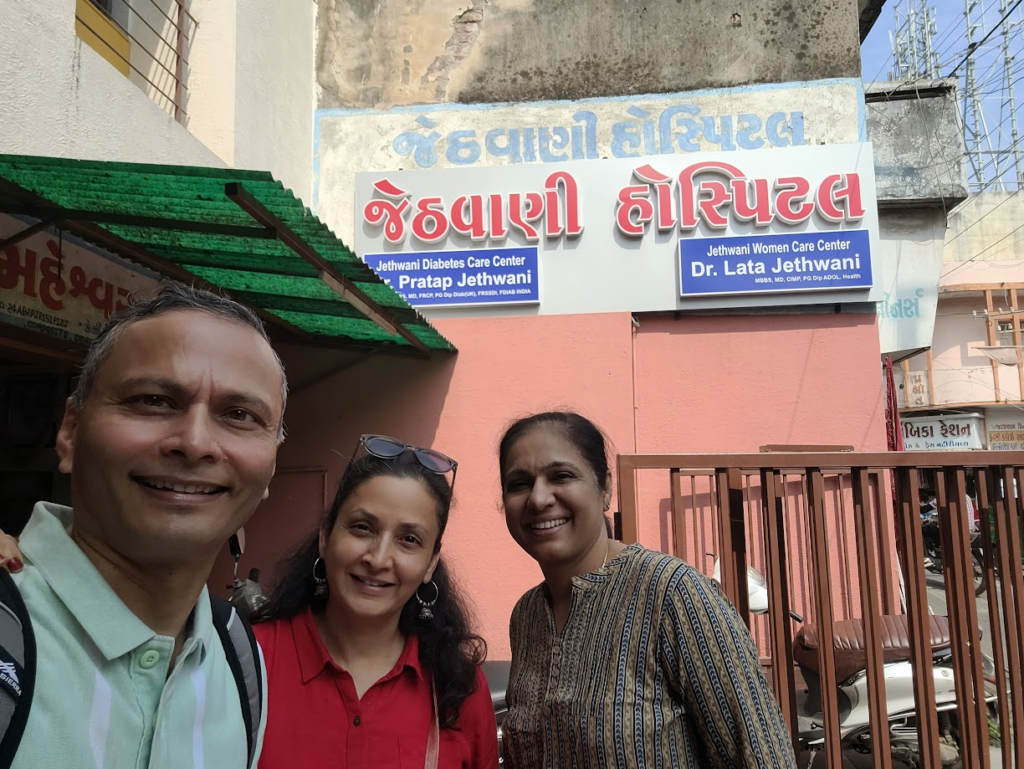
We reached Jamnagar around 1.00 pm. Anu bought some bandhani dress material because Jamnagar is known for its bandhani.
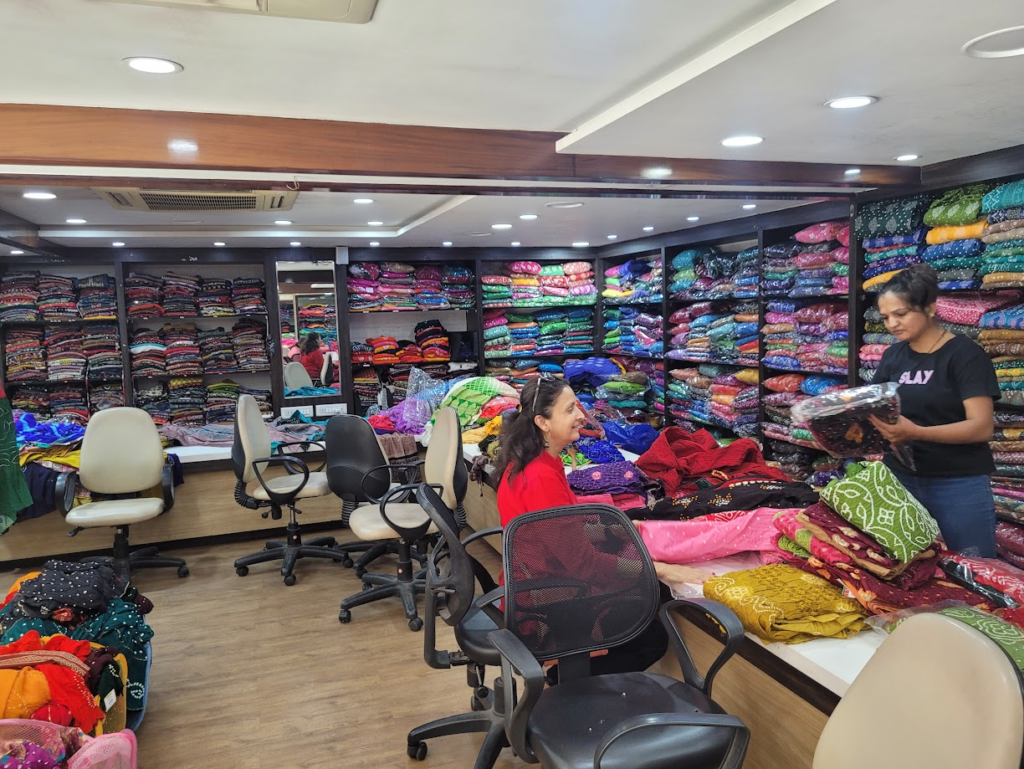
We started towards Dwarka around 3 pm. There were dark clouds in the sky and at one point, it started raining heavily. We could hardly see anything on the road. Luckily, the road quality was excellent and we were able to drive at a decent speed.

We passed Dwarka and directly proceeded to Beyt Dwarka (“island” of Dwarka). This little island is further from Okha and was earlier accessible only by boat. Now a bridge has been built to access the island.
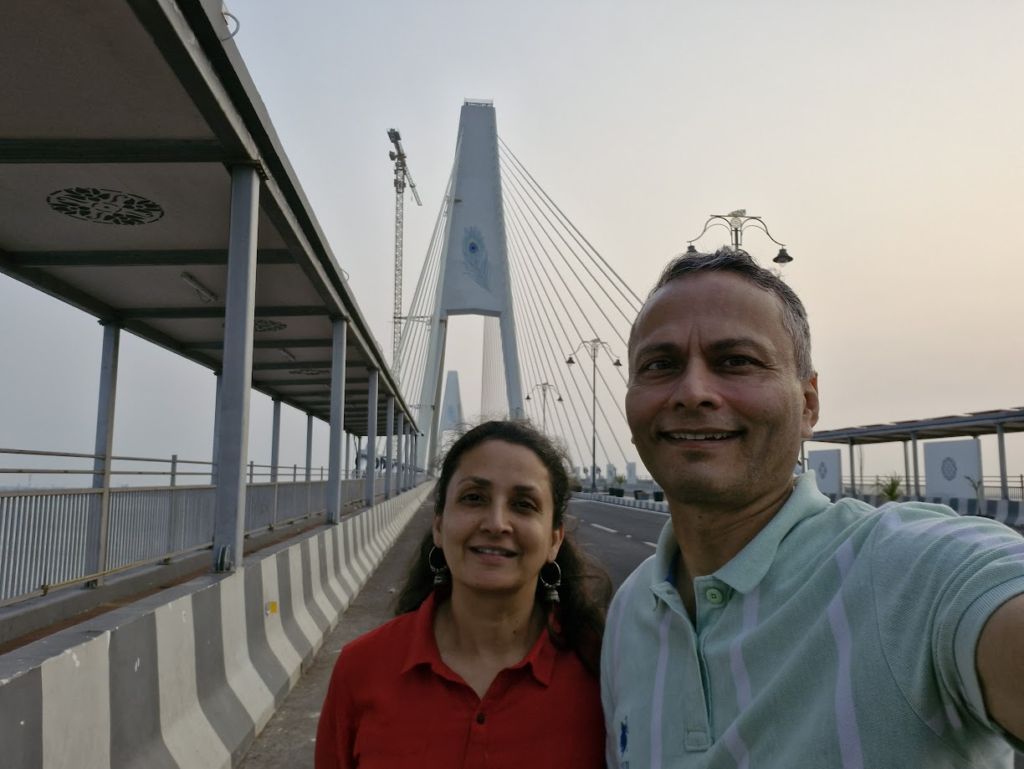
We drove to the island, parked and took an electric rickshaw for Rs. 500 to show us around the island. The first stop by Dandi Hanuman temple. Here Hanuman is shown relaxing with his son Makardhwaj. Hanuman was Bramhachari. Makardhwaj was born from a crocodile who swallowed a drop of sweat from Hanuman.


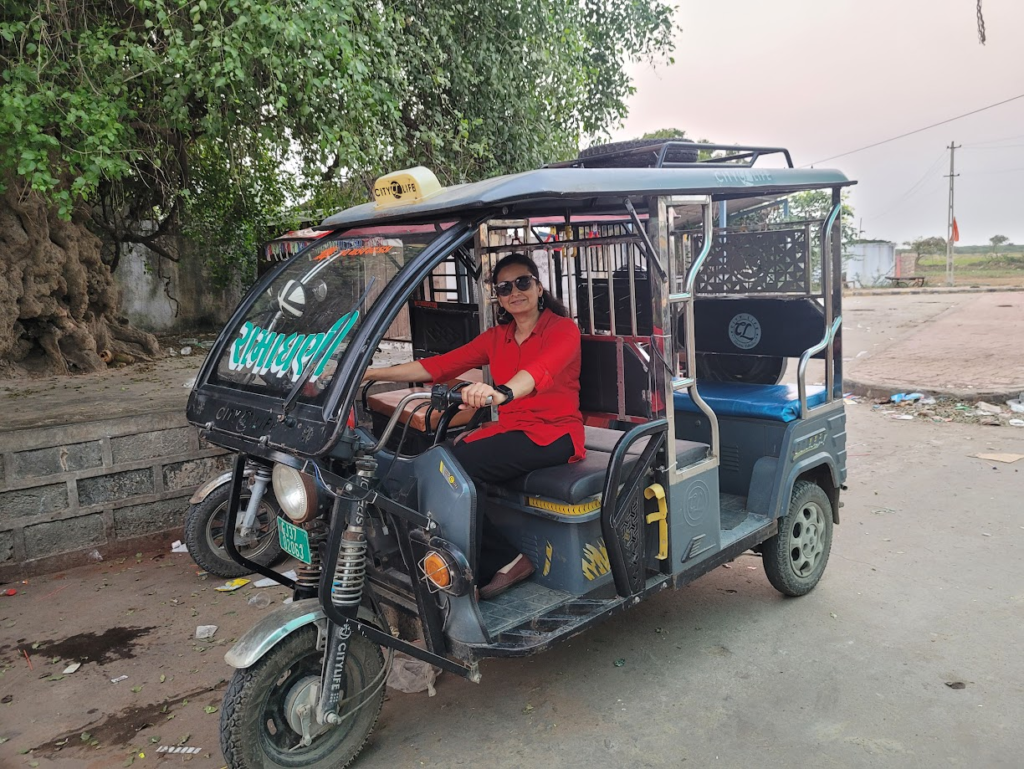
The next stop was Ashapura Mata temple on the island. Ashapura is a kuladevi for many people in that region.
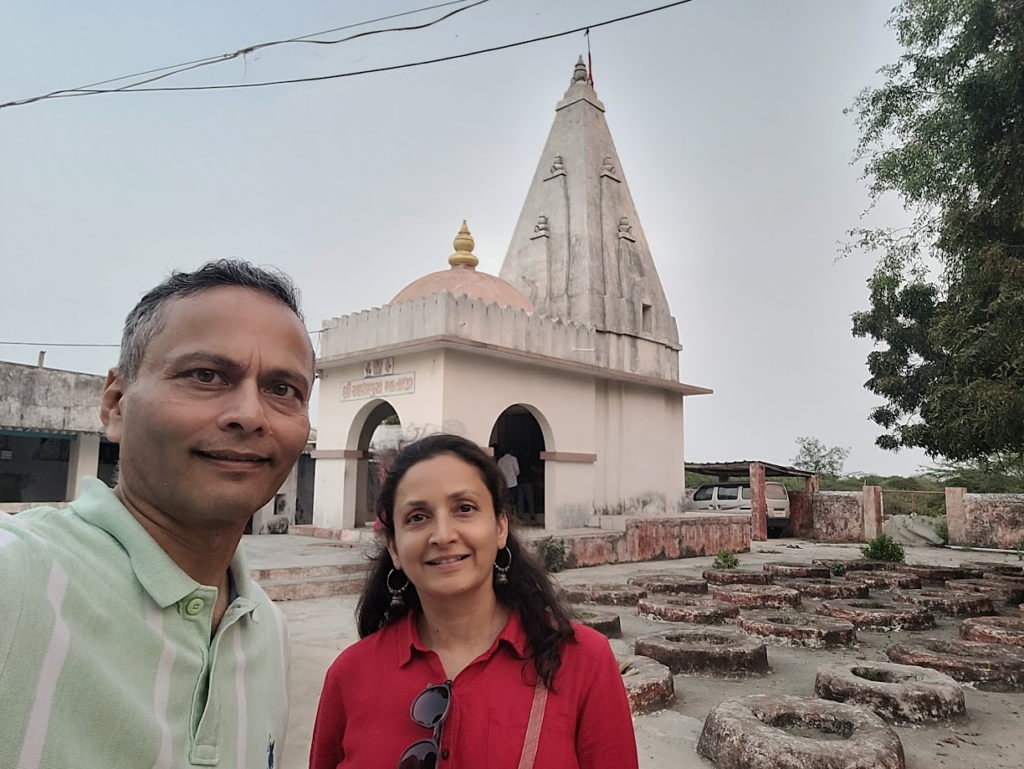
Our final stop on the island was at Dwarkadhish Temple. This is where Krishna is supposed to have lived. No photography was allowed within the temple. They also showed us the place where Sudama (Krishna’s friend) had come to meet Krishna.


On our way back to Dwarka (separate from Beyt Dwarka) we ate at the Honest restaurant where Anu ate dosa and I had panipuri.
We checked into the Fern Sattva Resort 6 km south of the city of Dwarka. It is a very nice hotel.
Day 2: Sun, Oct 20: Dwarka, Shivrajpur, Nageshwar, Porbandar
We started early morning around 6.30 am and first went to Dwarkadhish Temple in the city of Dwarka. The temple is nice, but the surroundings are a little dirty. Dwarka city was Krishna’s capital and he administered from this city.
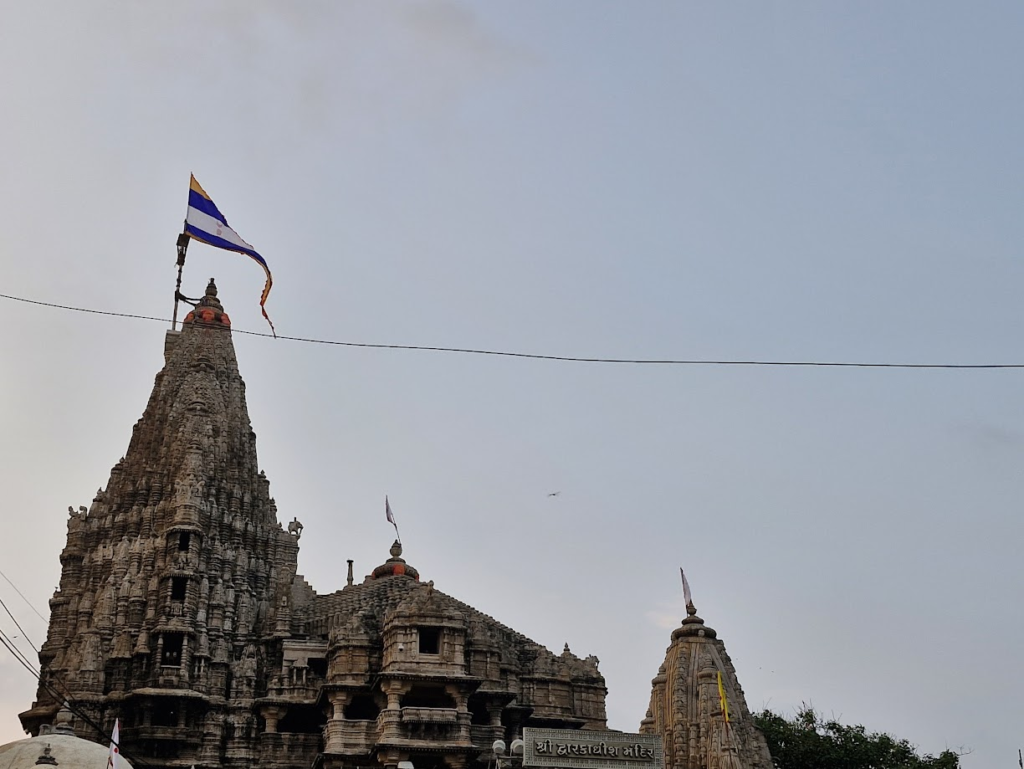

We did the darshan at Dwarkadhish temple and then walked to the Gomti river ghat behind the temple.
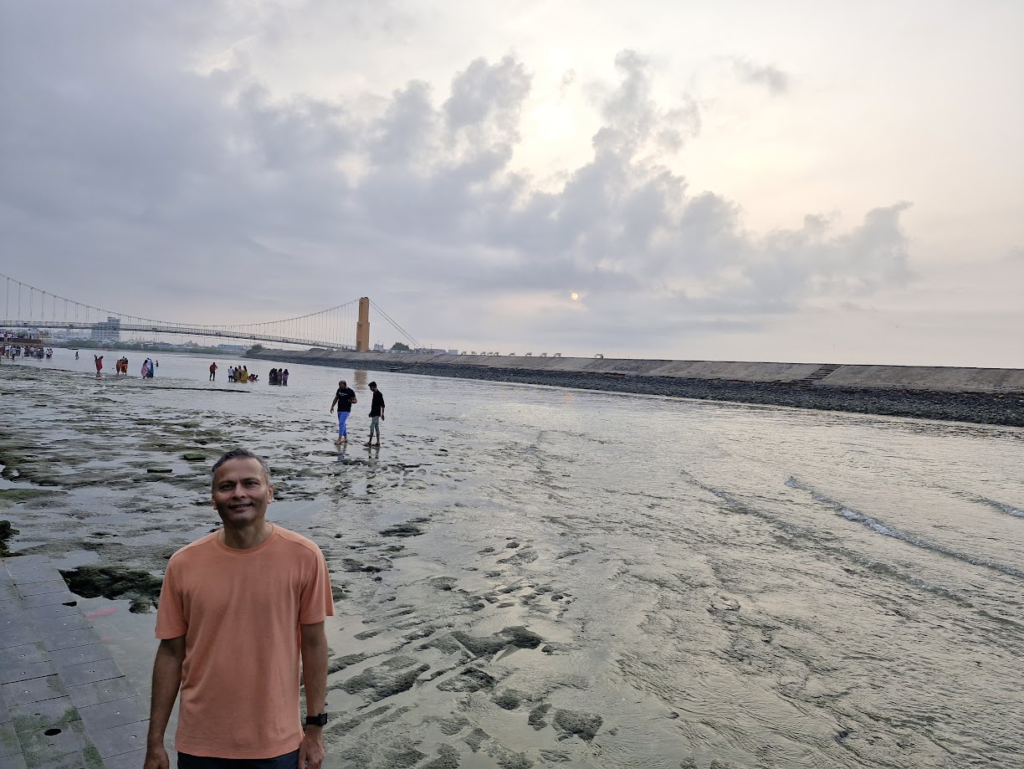
There was a nice view of the Sangam Narayan temple near the beach.


From Dwarka temple, we proceeded to Shivrajpur beach, a quiet, clean beach. The area has been developed quite nicely. But the slope of the beach is a little too steep, so we could not go too much into the sea. The water was nice and warm though.


Nageshwar mandir is about 18 km (30 mins away) from the beach. It is one of the legendary temples mentioned in the Shiva Purana and is one of the twelve Jyotirlingas.


We went back to Fern Sattva hotel, took a bath and proceeded to Porbandar around 12 noon. On the way, we visited a Turtle farming center, where the forest department tries to help young Green turtles survive. Green turtles live about 250 years.

We ate at a non-descript hotel, but the food turned out to be totally awesome Kathiawadi food. Bajra rotla with eggplant, undhiyu and chaas was an ultimate combination.
We reached Porbandar around 2.30 pm and went straight to Kirti Mandir, the place with Mahatma Gandhi was born. It is a small museum memorializing him and his wife, Kasturba Gandhi.
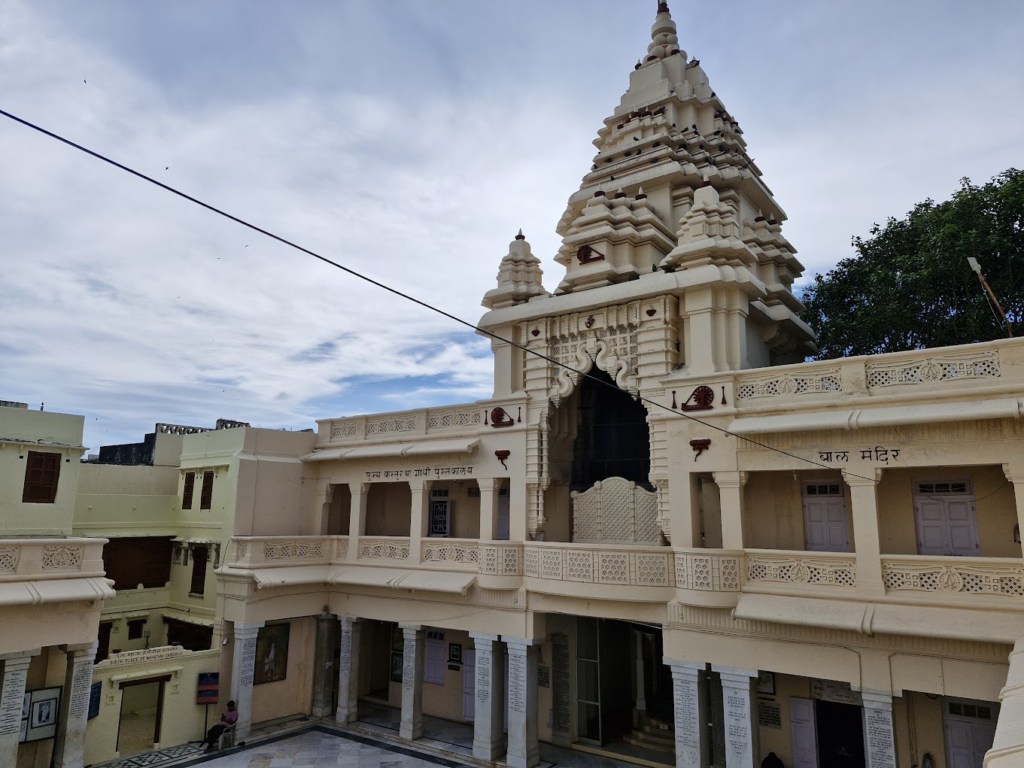
We proceeded to a the Sudama Temple. Krishna’s friend Sudama was born in Porbandar and therefore, earlier, it was called Sudamapuri. A temple was built in the early 1900s for Sudama. The story of his visit to Dvaraka to meet his friend Krishna is featured in the Bhagavata Purana. There is a statue depicting Krishna and Sudama’s meeting.

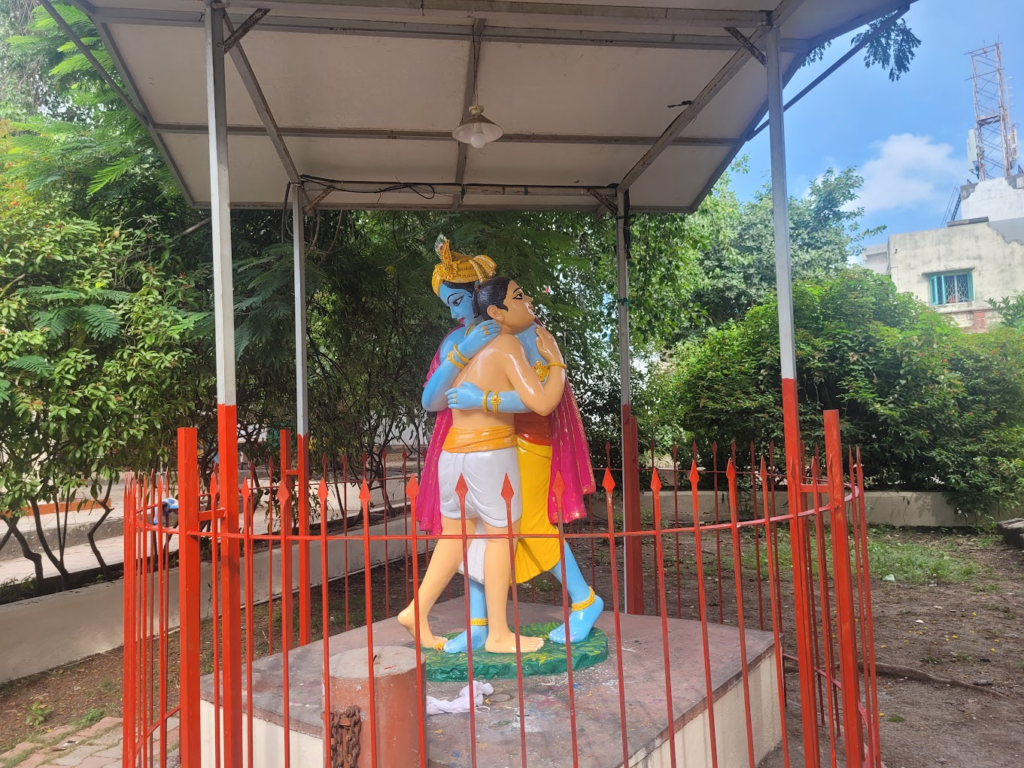
We then visited a residential school appropriately named Sandipani Ashram (after Sandipani, teacher of Krishna and Sudama). It is a pretty campus.

At around 4.30 pm, we checked into the Lord’s Inn, the only 4-star hotel in Porbandar. The hotel was ok and had a lot of electricity failures, but the location was awesome. It was right on Porbandar beach. There was a nice walking promenade along the beach. We spend a significant part of the evening walking on the beach.

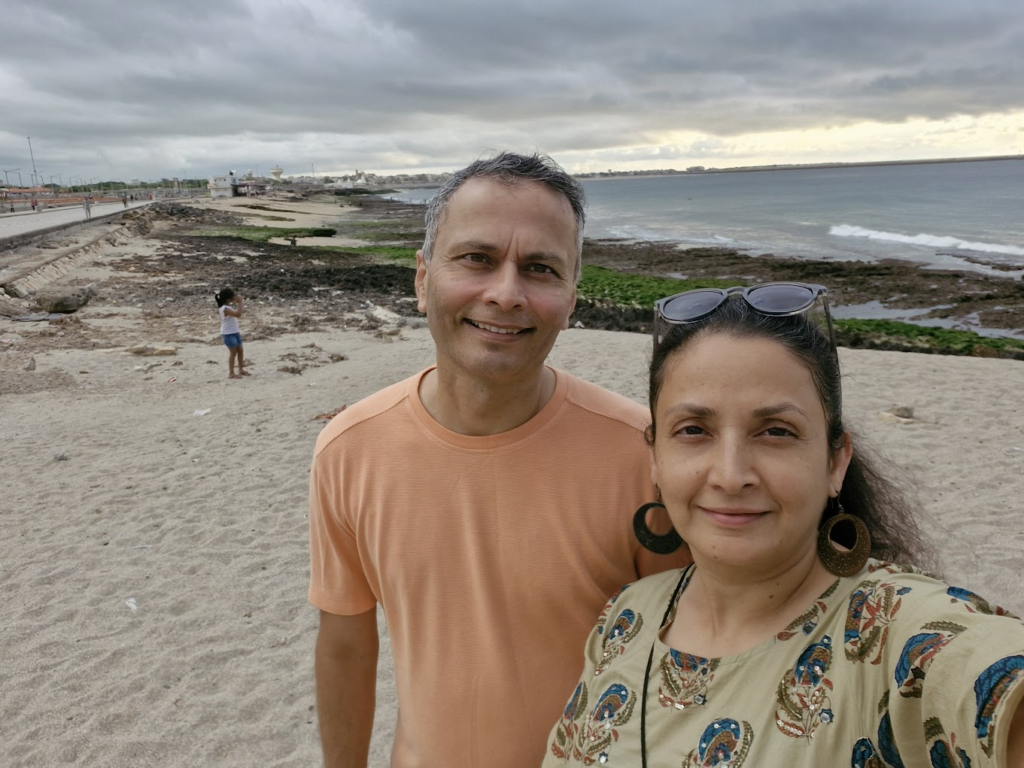
We ate dinner at Blue Coriander, the restaurant inside the hotel. The food turned out to be decent and it had great views of the beach.
We retired for the night a little early around 9.30 pm.
Day 3: Mon, Oct 21: Porbandar, Madhavpur Beach, Chorwad, Somnath, Diu
We started early from Porbandar around 8 am. We went directly to Madhavpur beach reaching around 9.30 am. It is a long, pristine beach on the Arabian sea. The water was fantastic as usual. We walked on the beach.
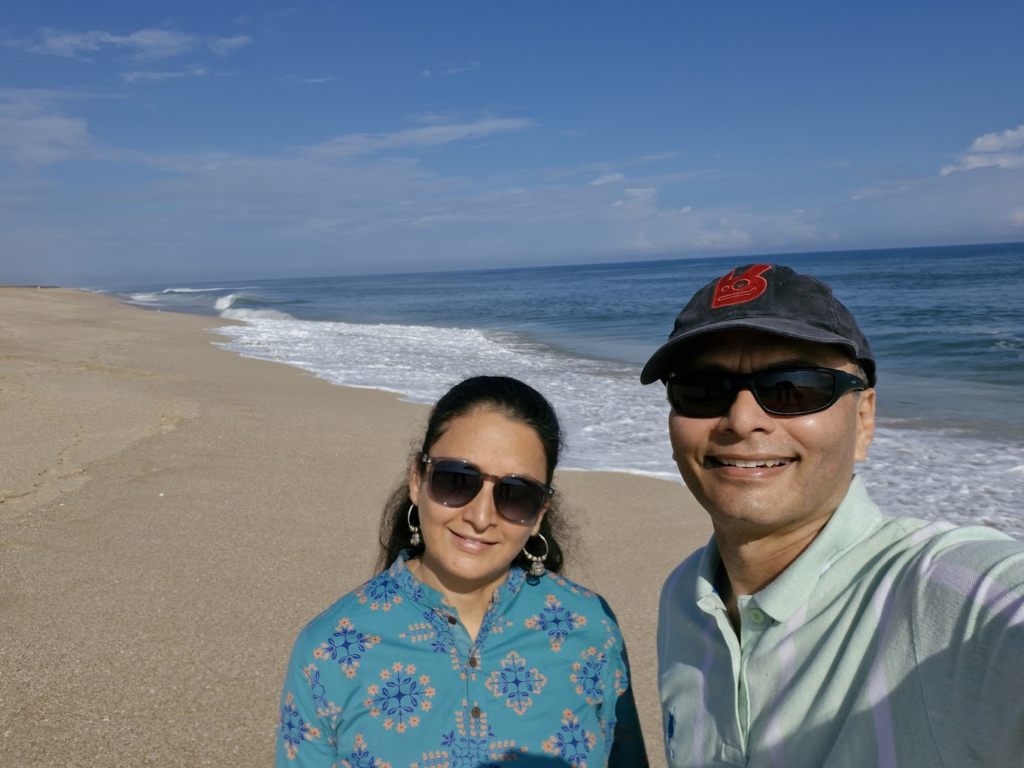
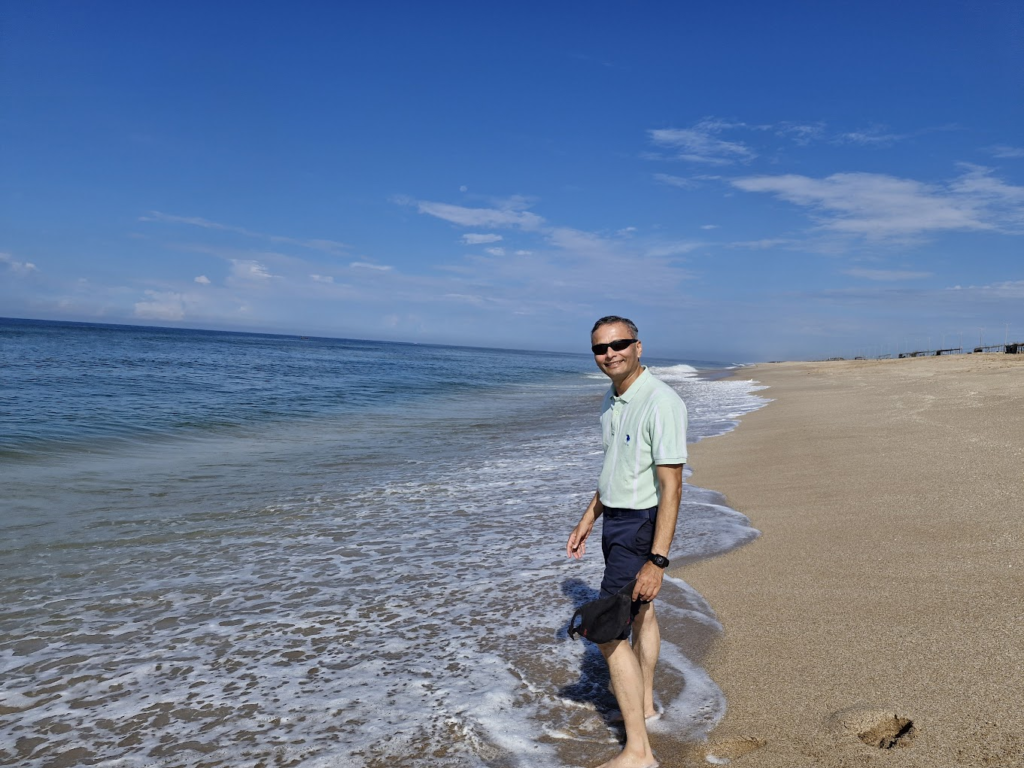
We then went to Chorwad, the place where Dhirubhai Ambani grew up. We reached around 10.30 am. The beach at Chorward is supposed to be very dangerous, so we stayed about 200 ft away from the beach.
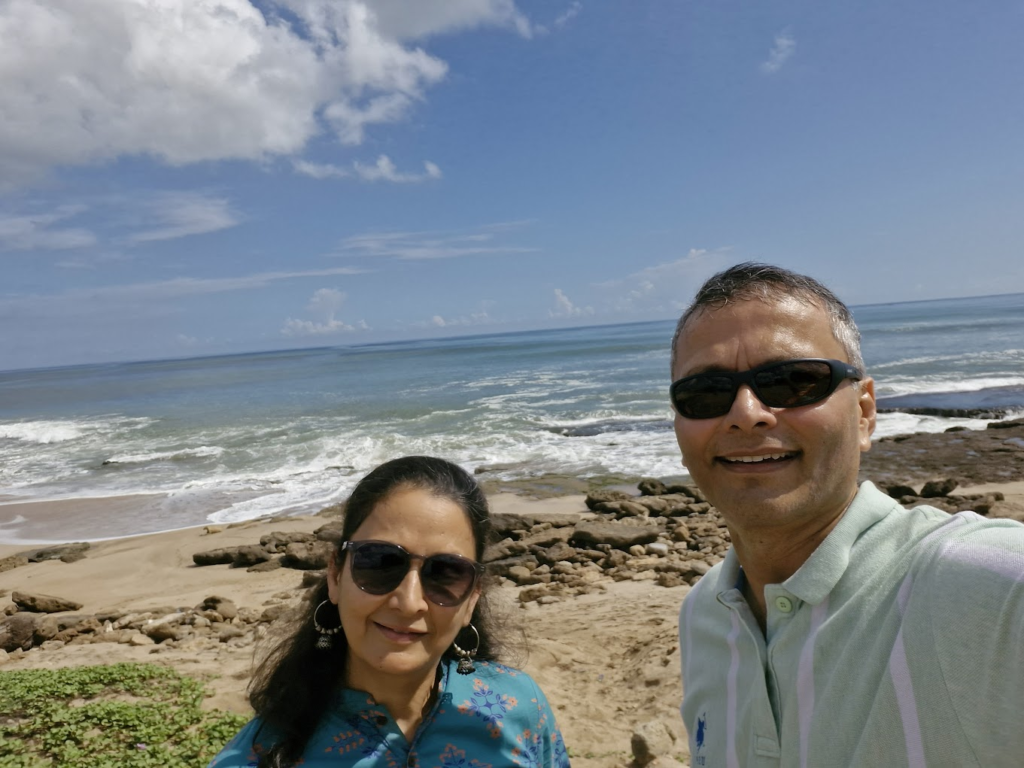
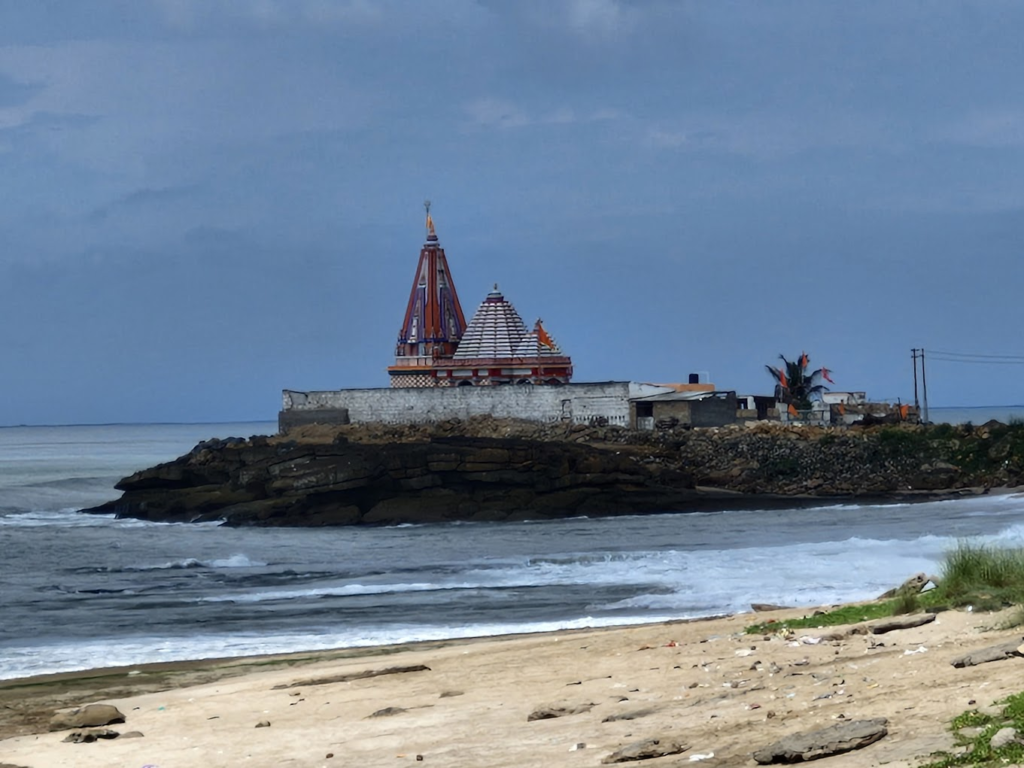
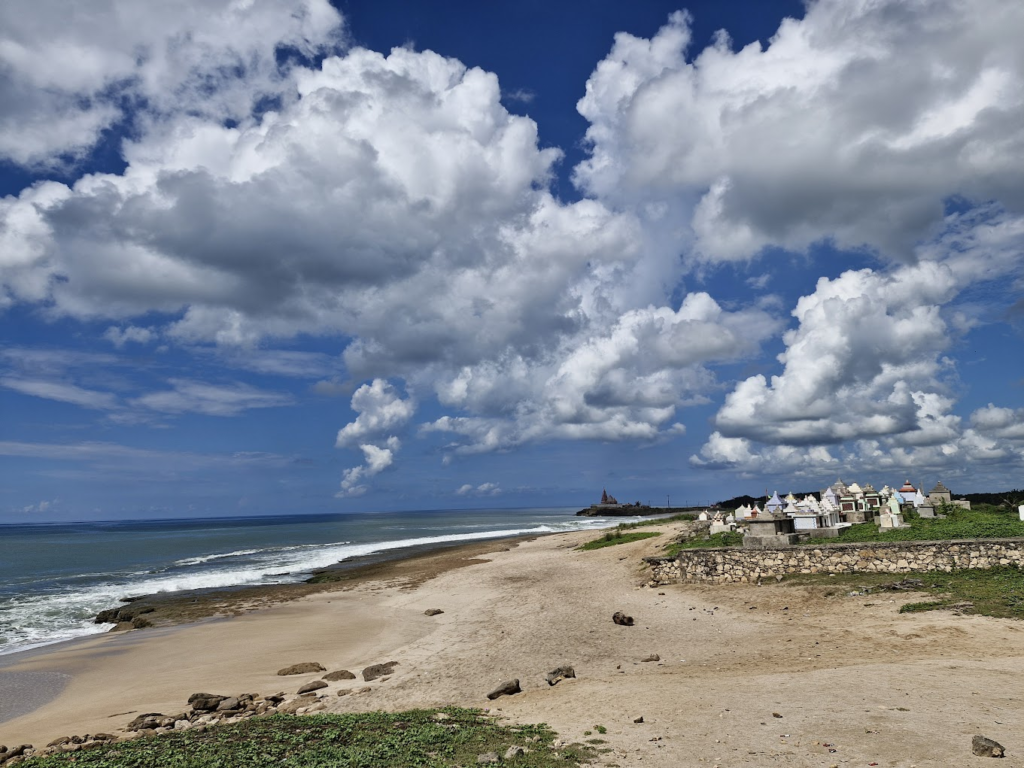
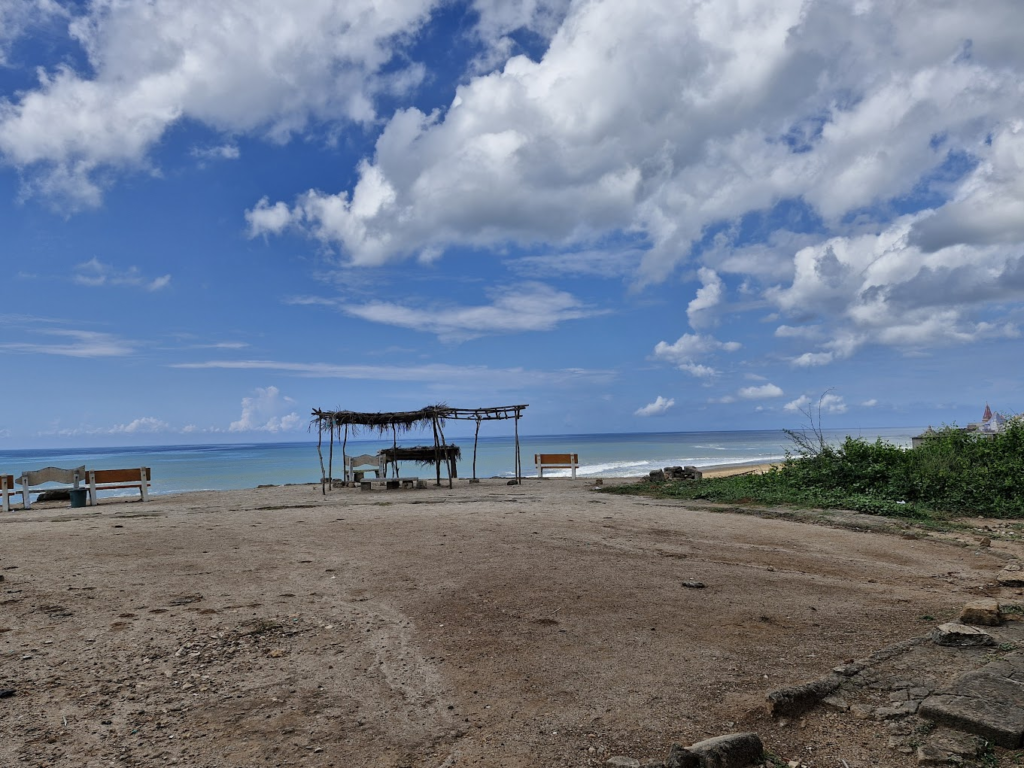
We also saw Dhirubhai Ambani’s home in Chorwad, which is now turned into a memorial building.
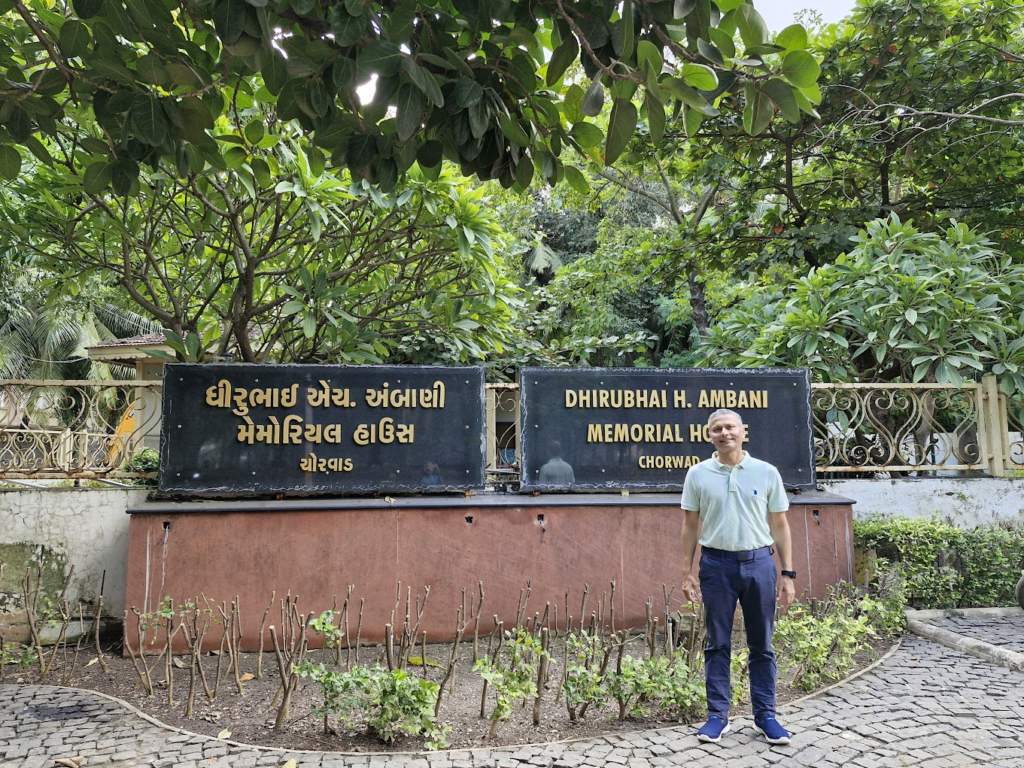
Our next and most important stop was the Somnath temple. We reached the entry gate for Somnath at 12.30 pm. The temple is truly magnificent and well restored. Photography is totally prohibited. We were able to take a picture from outside the boundary wall. Somnath temple is one of the most important Jyotirlingas and was originally built in the 1st century. It was destroyed multiple times, notably by Mahmud Ghazni in 1026 AD. The restored Somnath temple is a matter of cultural pride for Indians.
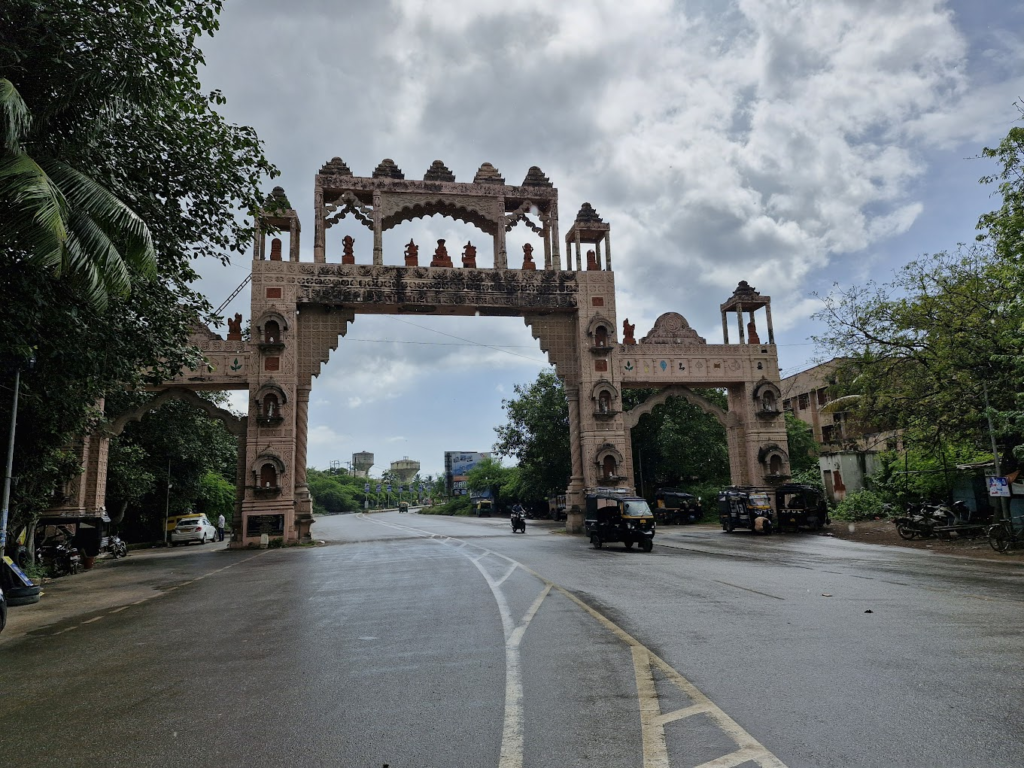
We visited Somnath temple around 12 noon and there were hardly any crowds. We spent a lot of time peacefully in darshan. The idols are very ornate. At Somnath temple, there is one point where if you look south, there is no land mass in the way till the Antarctic.
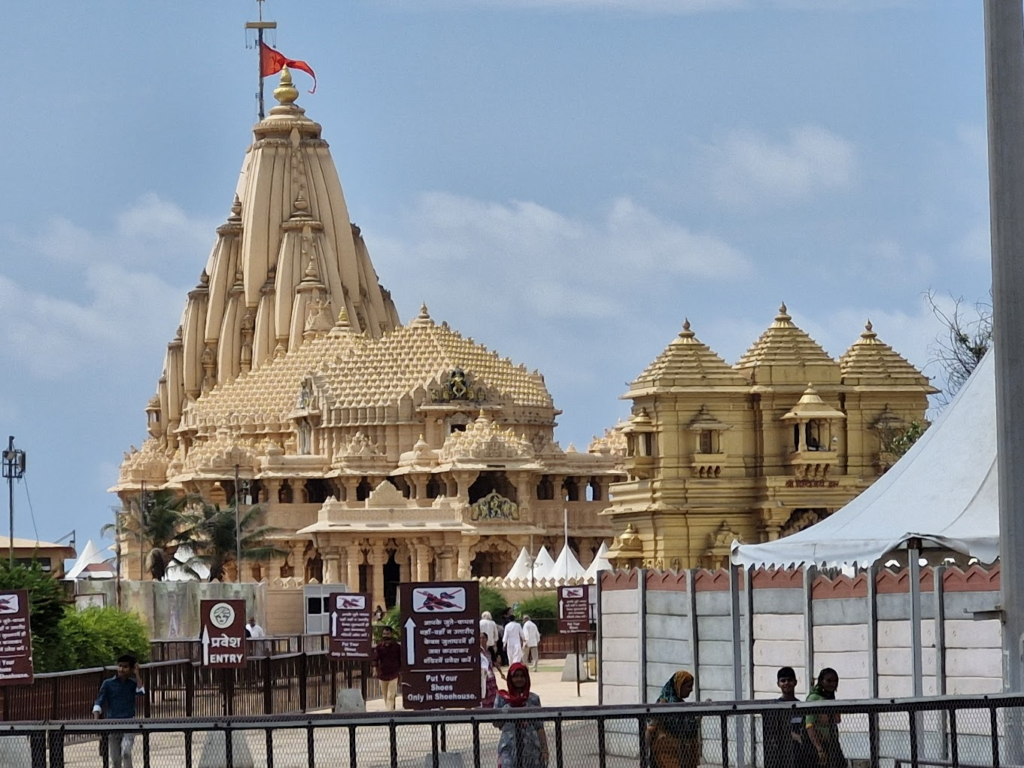
Just outside the Somnath temple, a lady was selling the pistachio fruit. We had never seen one. We peeled it and ate the wet pistachio inside it. Very cool.
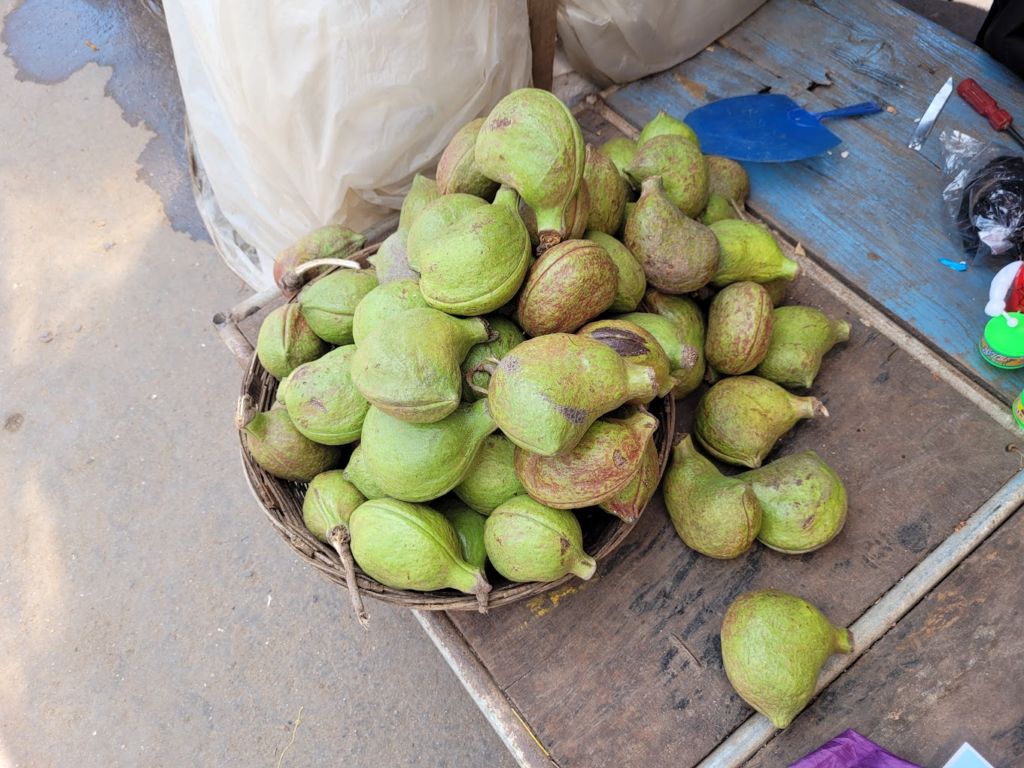

We left Somnath around 2.30 pm and drove to Diu, formerly a Portuguese colony within India (Goa, Daman, Diu, Dadra and Nagar Haveli). It is off the coast of Gujarat, but technically, a union territory with its own administration. For example, alcohol is allowed in Diu, but not in Gujarat. It was almost 4.30 pm till we got to Diu.
Our first stop was INS Khukri, a Type 14 (Blackwood-class) frigate of the Indian Navy. She was sunk off the coast of Diu, Gujarat, India by the Pakistan Navy Daphné-class submarine Hangor on 9 December 1971 during the Indo-Pakistani War of 1971. It was the first warship sunk in action by a submarine since World War II. It is the post-independence Indian navy’s only warship to have been lost in war. The current exhibit was another ship with the same name, which had now been decommissioned.
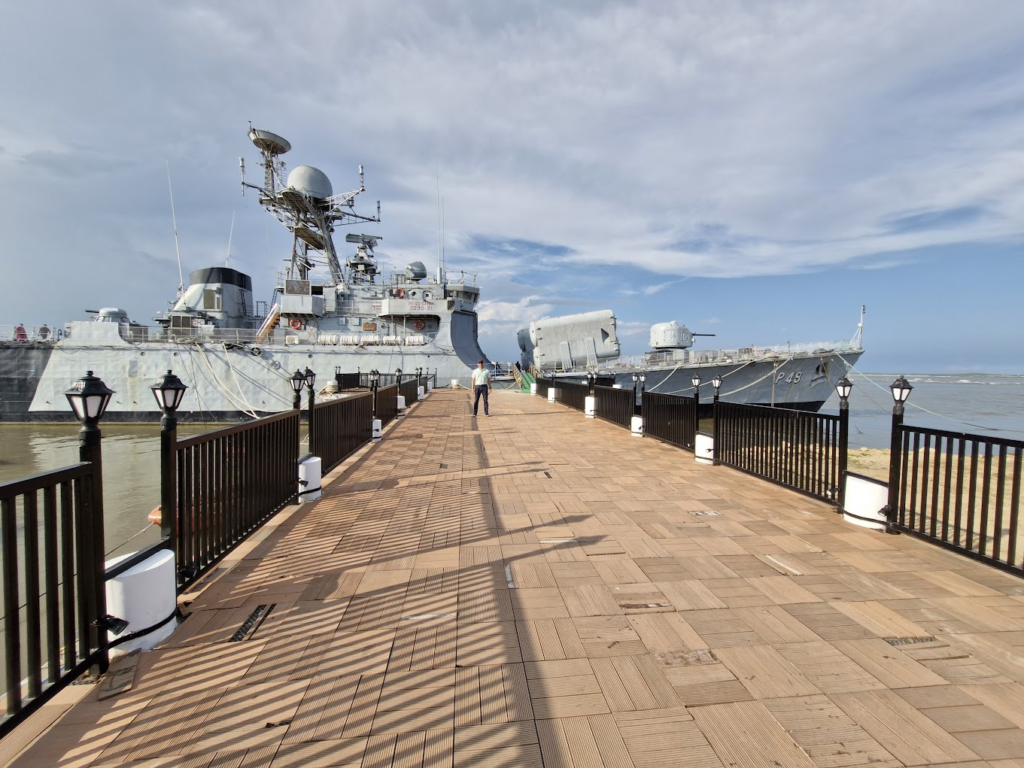
We saw the exhibit and then proceeded to Diu fort which we reached around 5 pm. This is a really well maintained fort with fantastic views of the Arabian sea. The Portuguese had to defend this fort against both marine and land attacks. So cannons in the fort point in all directions. We spent about 45 mins in the fort. This fort is worth visiting.
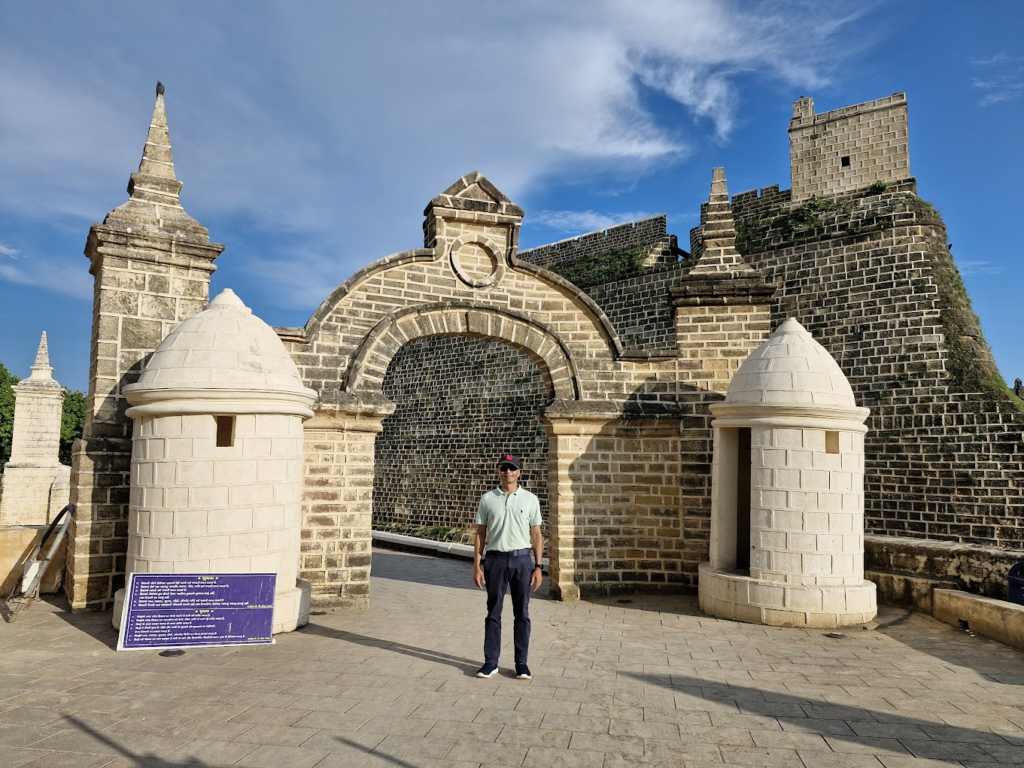
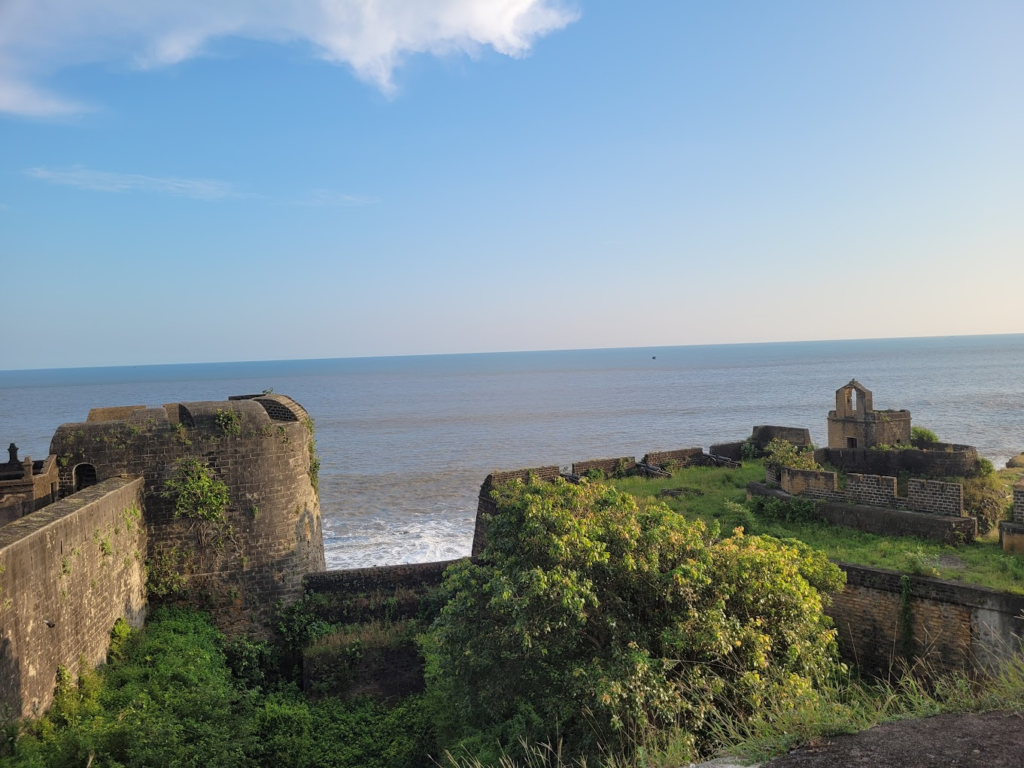
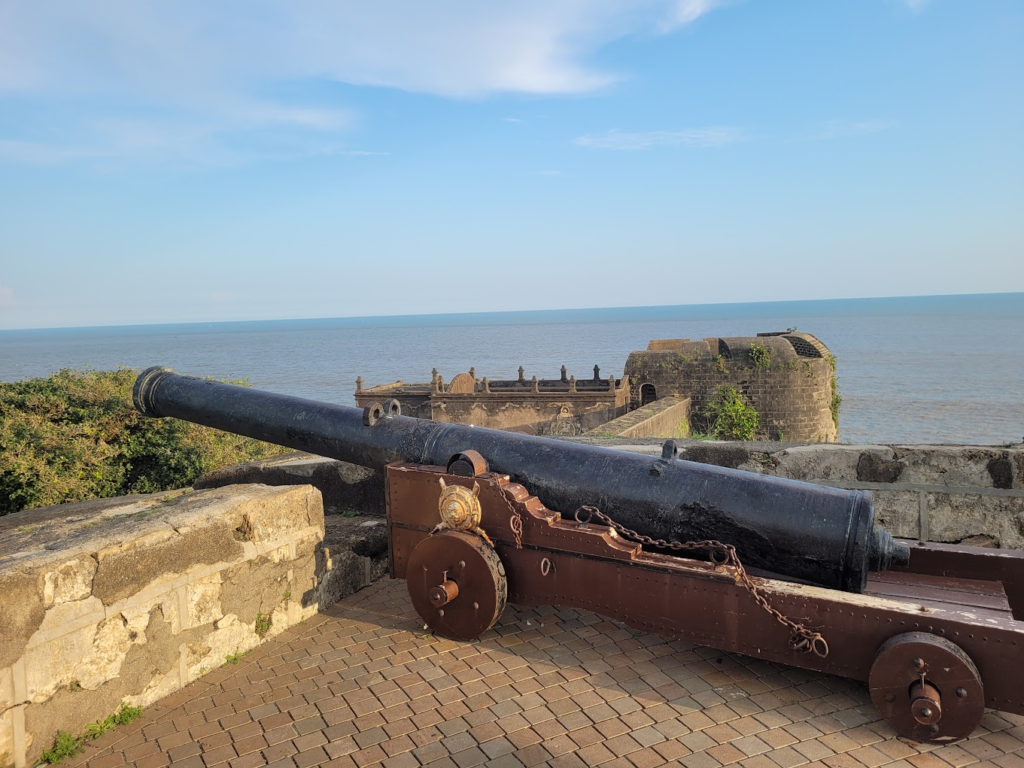
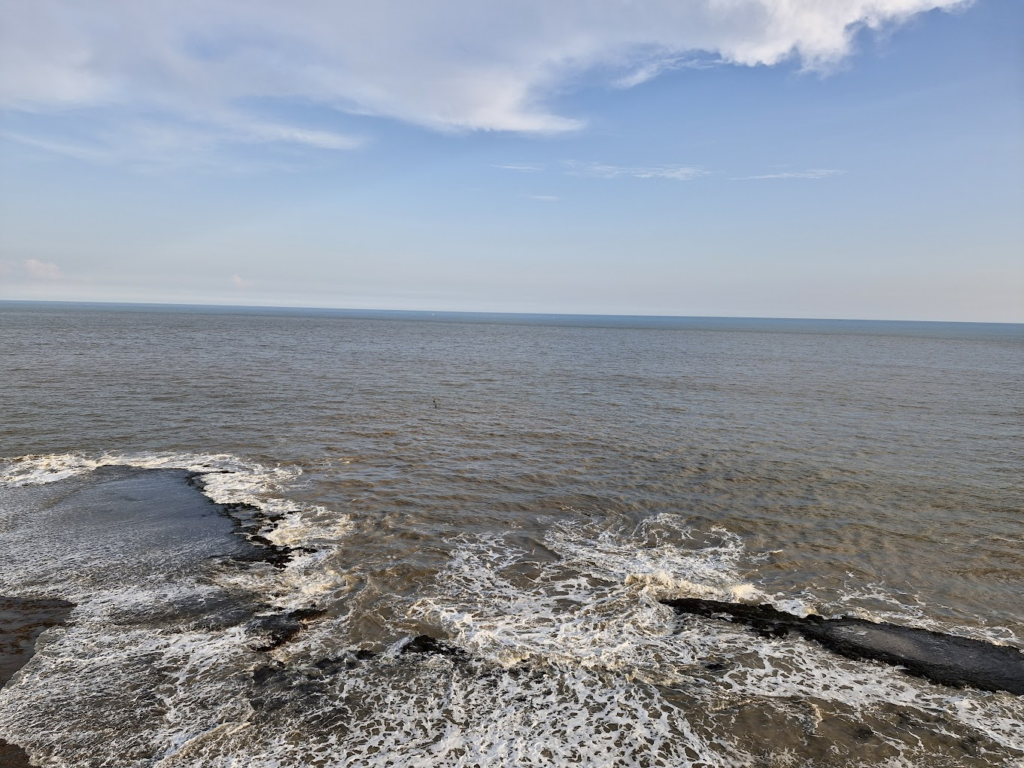
The Pani kotha is a place inside the sea where they kept prisoners. It was visible from the fort.
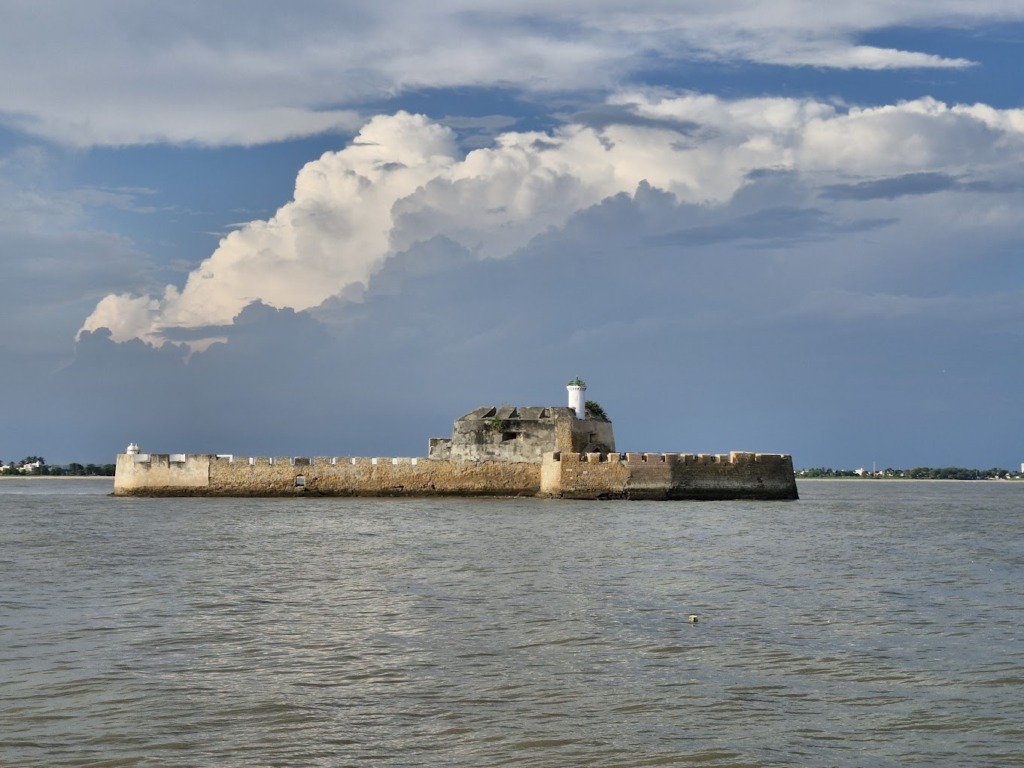
Our final destination for the day was the Fern Seaside resort at Nagoa beach in Diu. The beach is really nice. The resort is decent, but about 200 m from the beach, so not on the beach.
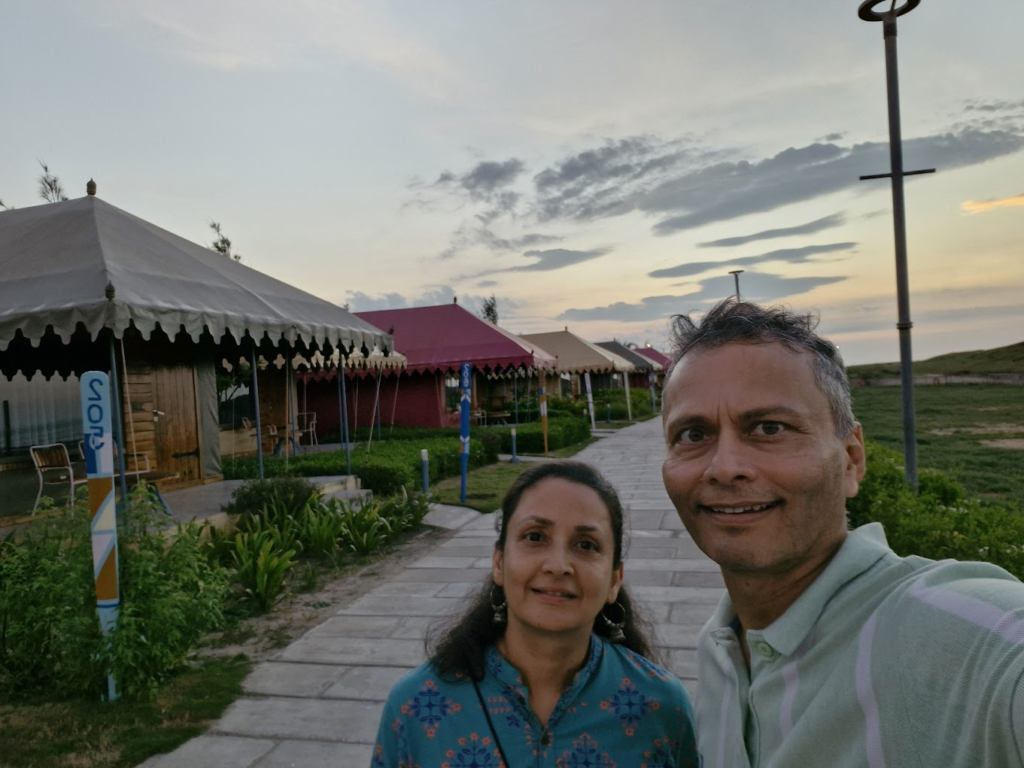
We spent a lot of time at Nagoa beach in the evening and ate dinner at a beach shack.
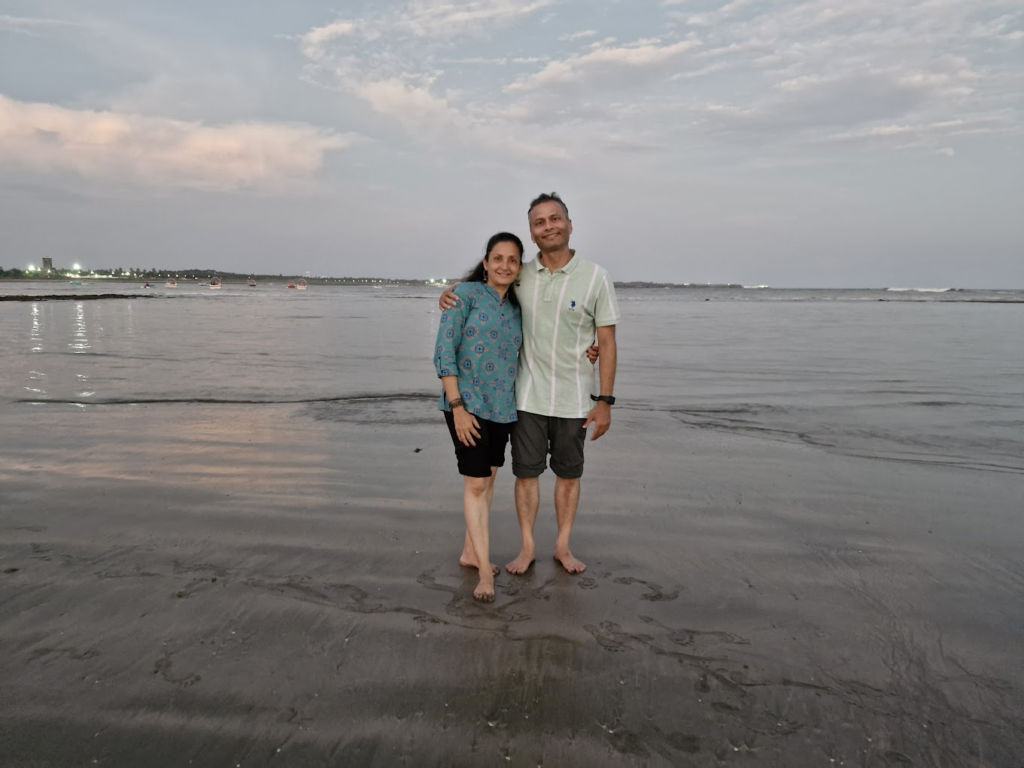

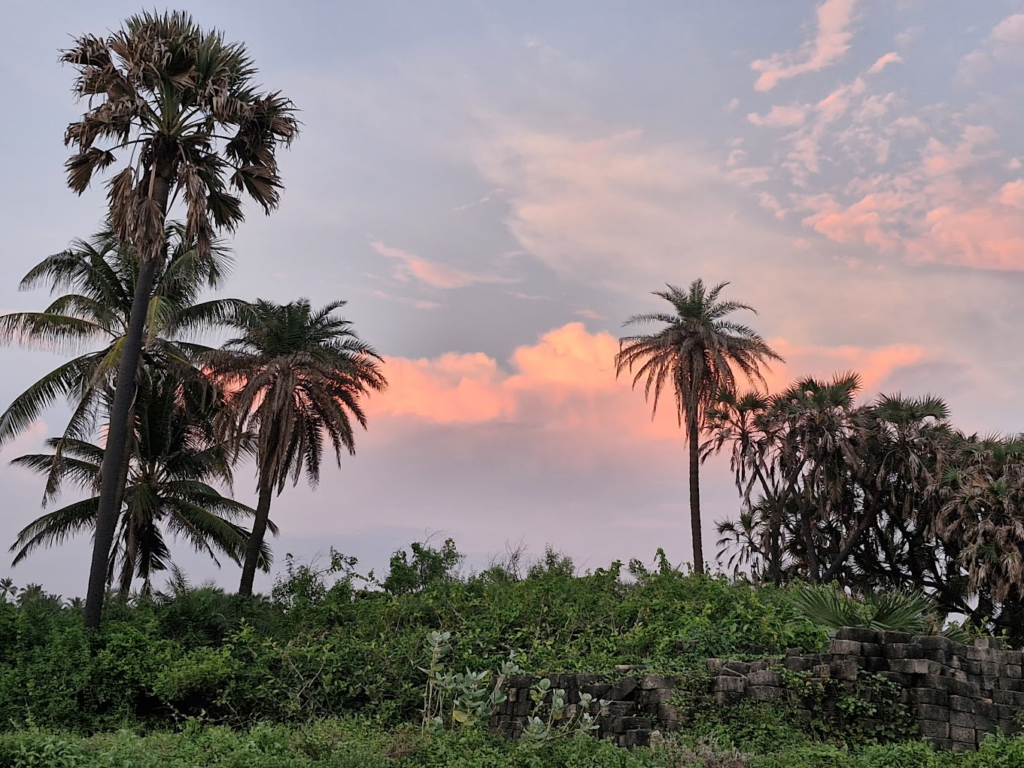
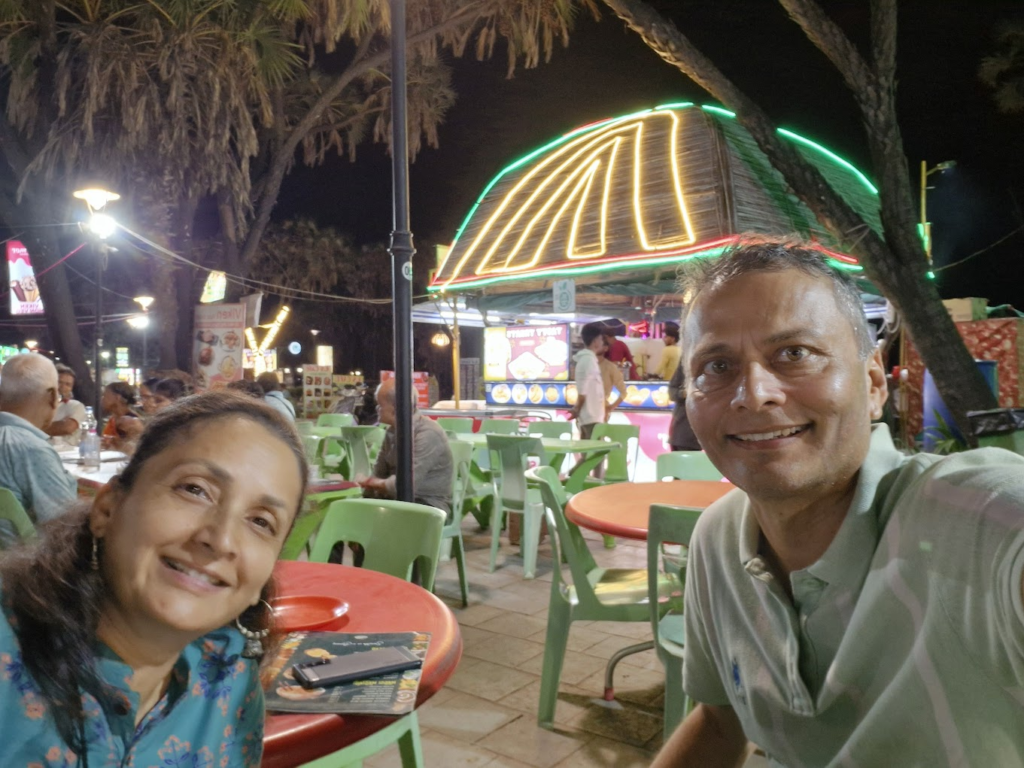
We then returned to Fern resort and slept around 10 pm.
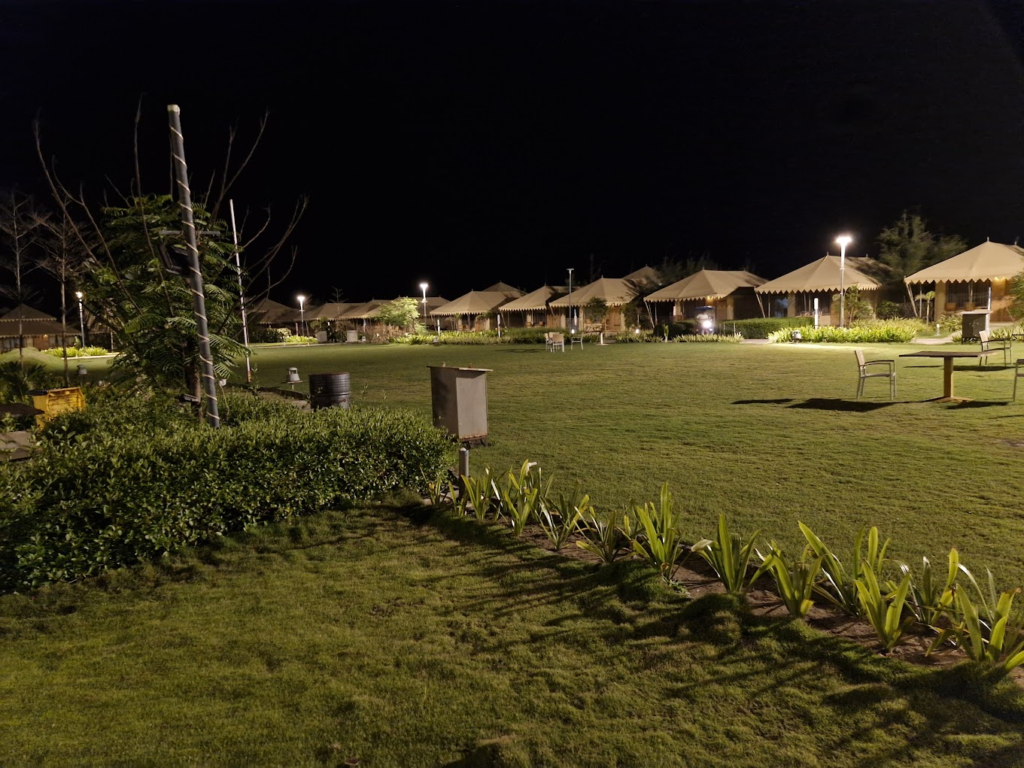
Day 4: Tue, Oct 22: Nagoa Beach, Sasan Gir, Junagadh
We woke up early and went back to Nagoa beach at around 7 am. We walked on the beach. I also rode the water scooter. It was a thrilling ride.
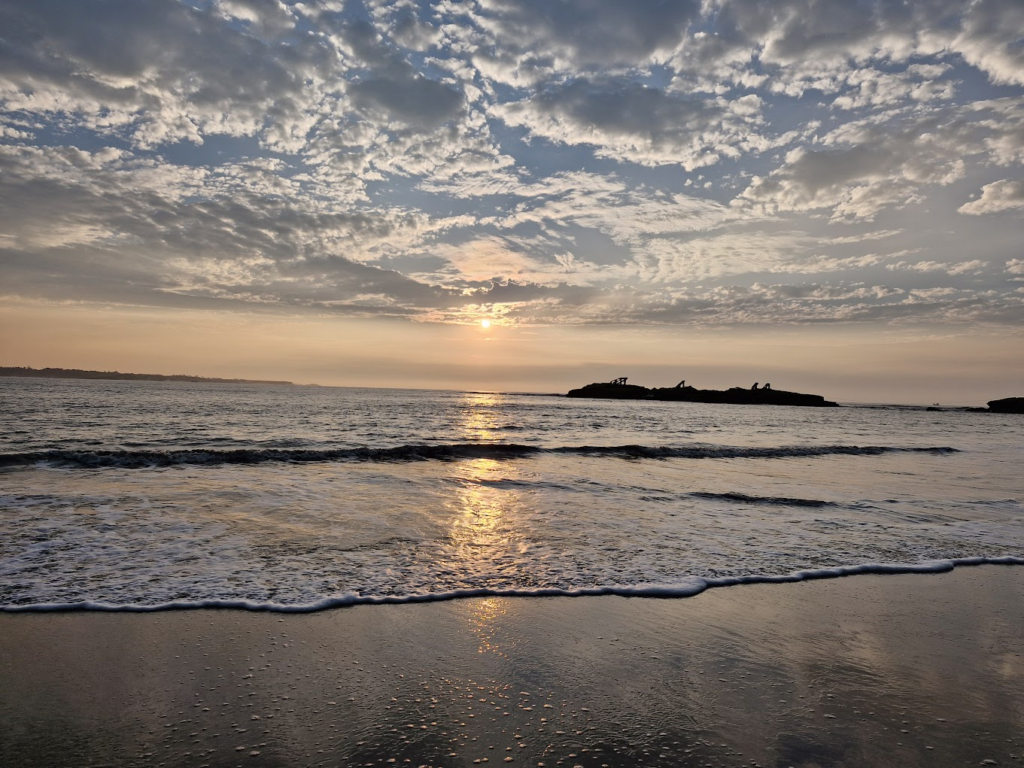


At around 10.20 am, we proceeded to Sasan Gir to report at the Sinh Sadan (Lion house) where we had registered for the lion safari at 3 pm. We reached Sinh Sadan in 2 hours from Diu, reaching by 12.20 pm.

We just hung around the place and ate lunch at a small restaurant called Annapurna. The place was small, but food turned out to be excellent.
Our safari started promptly at 3 pm. Mohammed was our guide and Rajivbhai was our driver. It was a brand new Maruti Gypsy 4 seater. We had to book the ride in advance. Rs. 1,000 permit fee and Rs. 2,900 for the vehicle + guide.
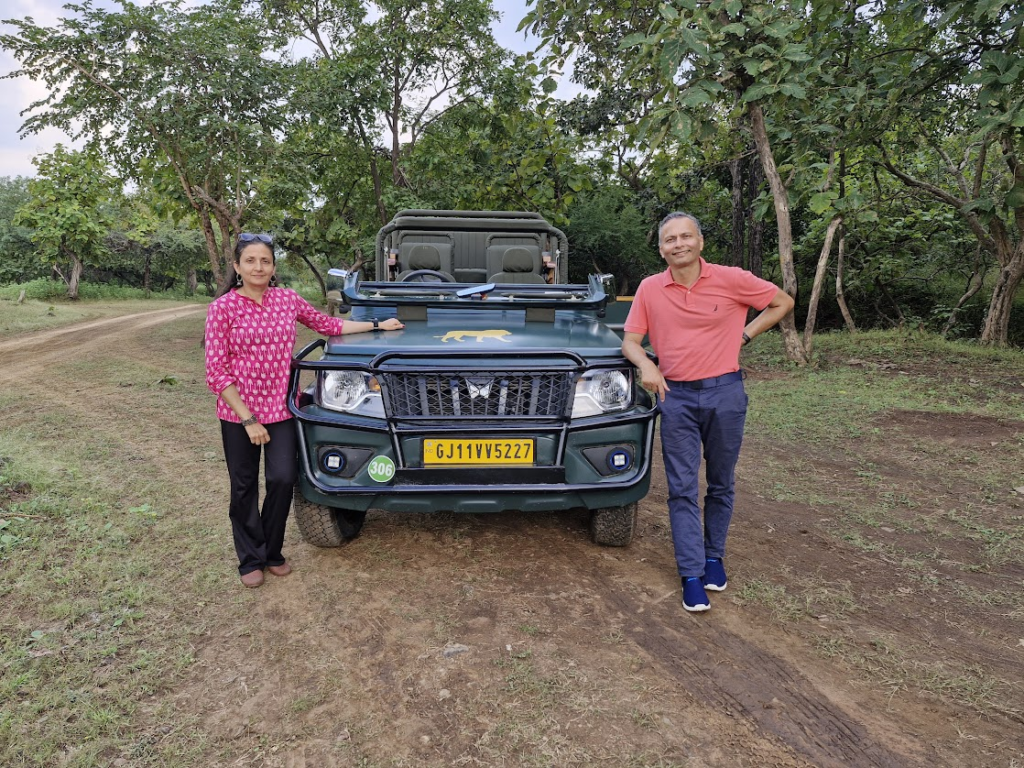
Gir National forest does not have tall trees and it was quite green at this time of the year. For about 1.5 hours, we saw a few animals and birds but nothing spectacular.

But then we chanced upon a lioness and two cubs and we were able to get a very close look. It was an amazing experience.
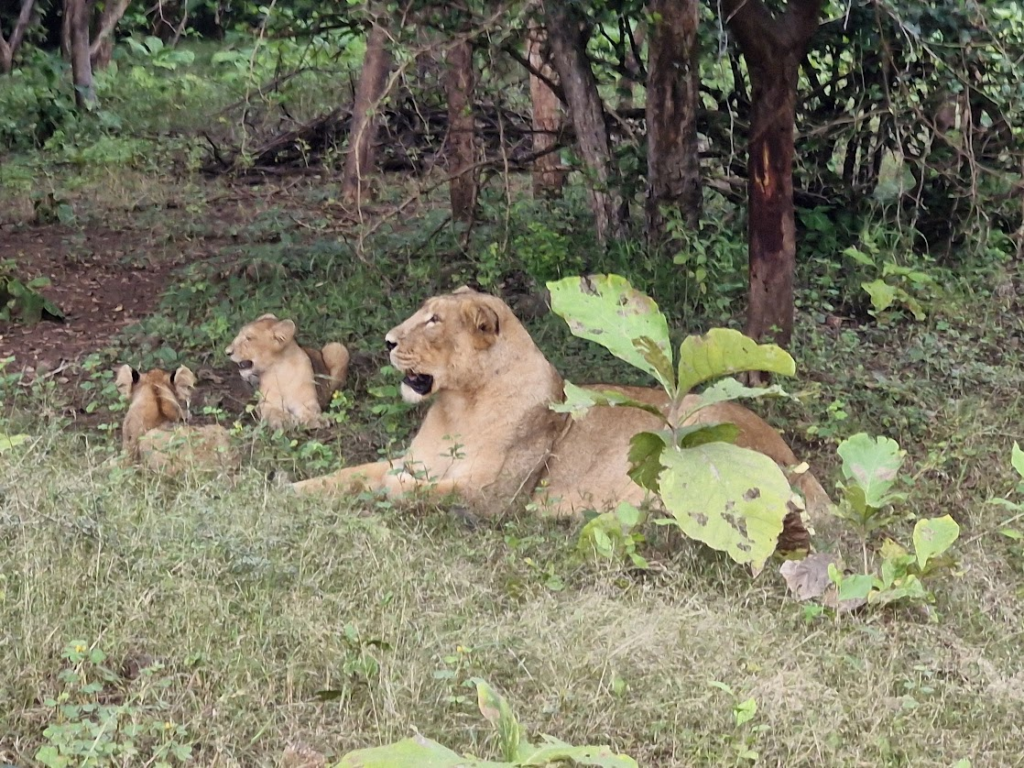
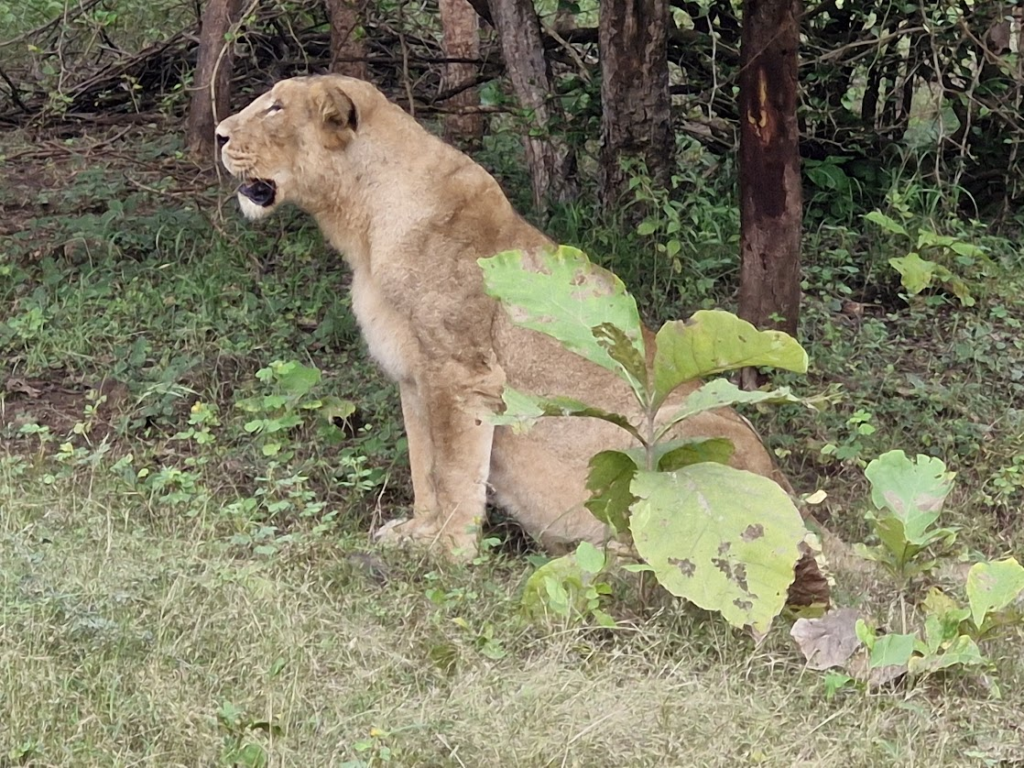
On the way back, around 4.45 pm, it started raining heavily. Rajivbhai had given us plastic sheets to cover ourselves, but by the time we got back around 5.20 pm, we were totally drenched.
We left from Sinh Sadan around 5.30 pm and drove straight to Junagadh. We checked into the Bellevue Sarovar Portico, a top class hotel.
Anu had not eaten anything at lunch, so she had a buffet dinner while I ate Schezwan noodles.
We slept around 10 pm, getting mentally ready to climb Girnar the next morning.
Day 5: Wed, Oct 23: Girnar, Maqbara, Uparkot, Khodaldham, Jalaram Ashram, Rajkot
Our day started early. We started from the hotel at 4.10 am and reached the entrance to the walking path up Girnar at 4.30 am.
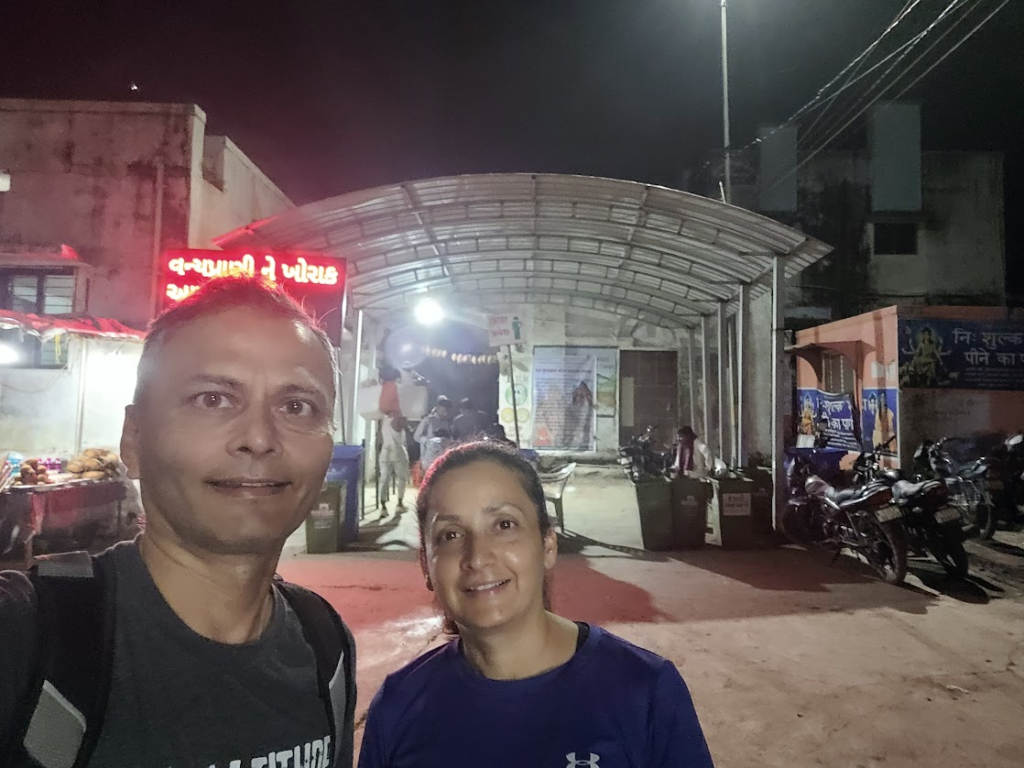
It is one of the holiest pilgrimages for Jains, where the 22nd Tirthankar, Lord Neminath attained nirvana along with other five hundred and thirty three enlightened sages. There is also a Amba mata temple and a Dattratray temple on Girnar.
Girnar has approximately 10,000 steps. The entire climb is done on well maintained steps. 40 mins into the climb, I suddenly felt weak. I got a little worried. I sat down, ate a packet of Parle G and drank water. Then I was fine.
We reached the Jain temple and the Amba mata temple around 6.30 am. This was a long, continuous climb with a 2,900 ft elevation gain. Then the path descended a little and then went up to another temple. Then, a step descent of about 300 ft and an ascent of 300 ft to the Dattatray mandir. We reached the mandir around 7.15 am.
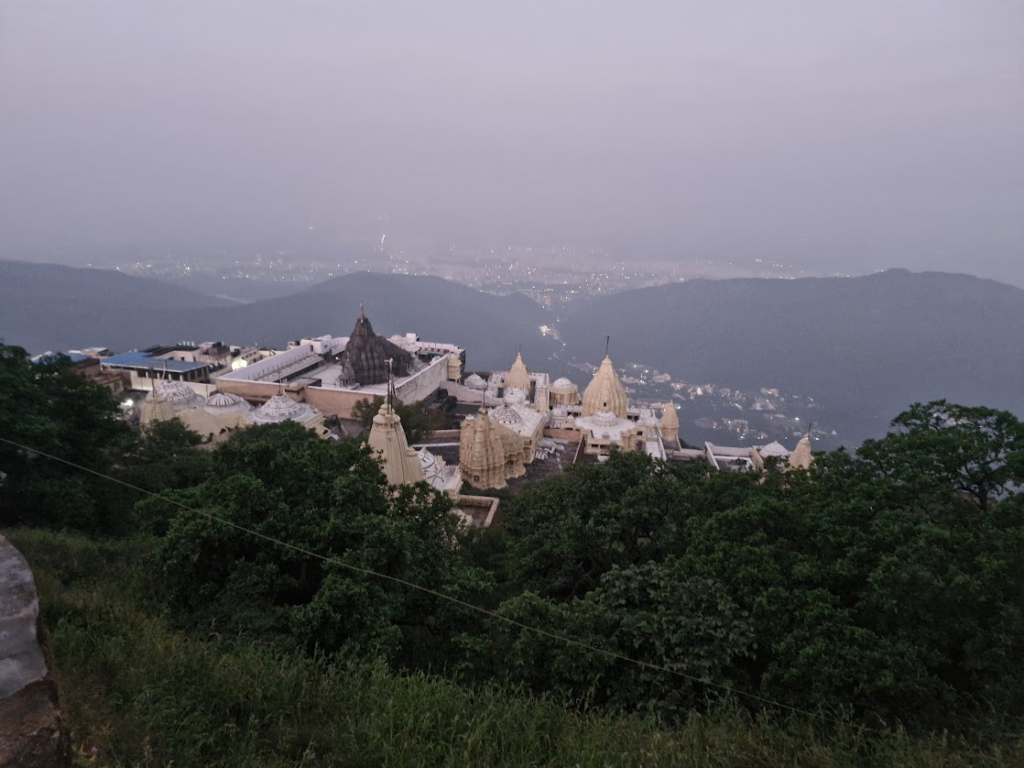
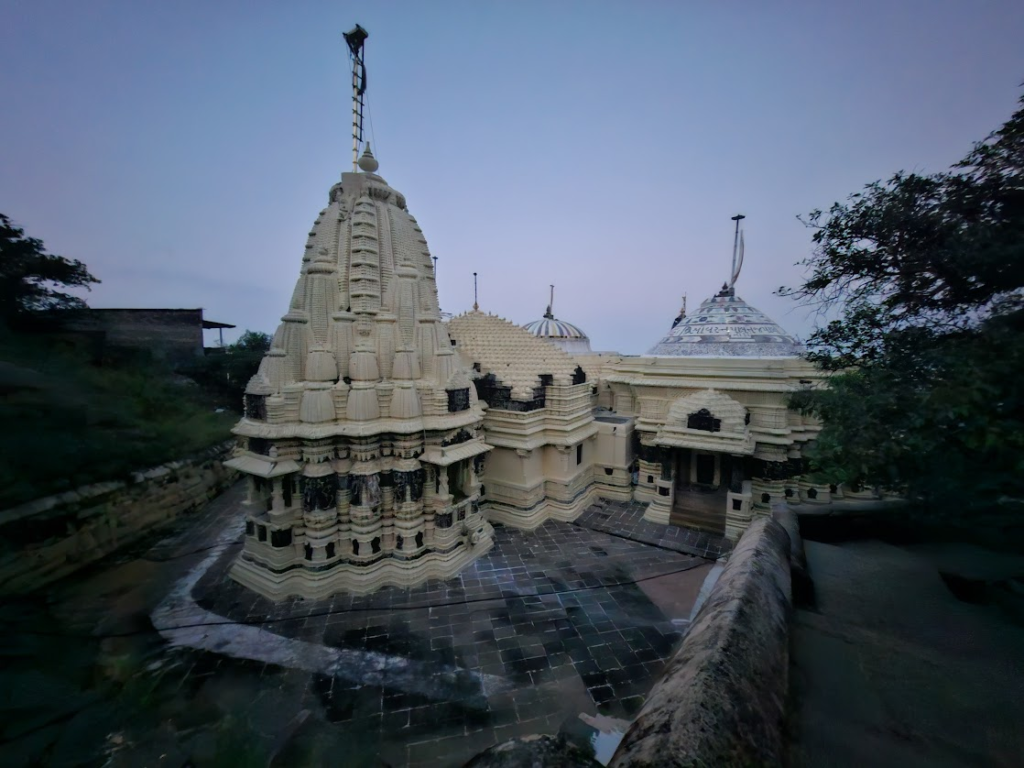

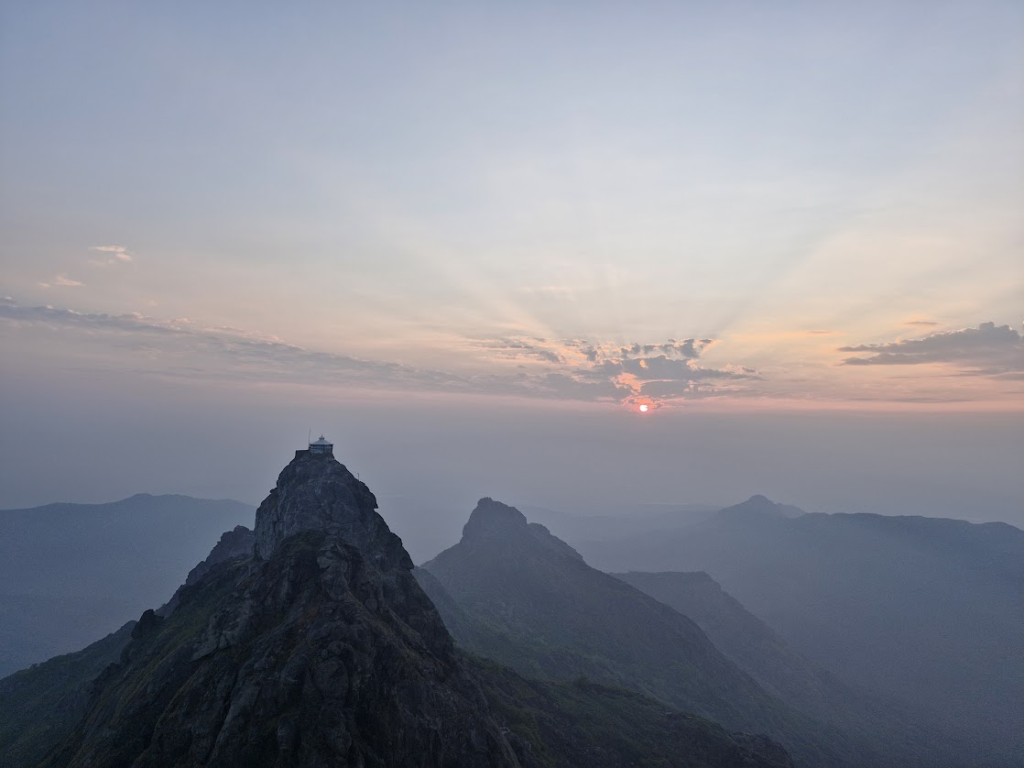
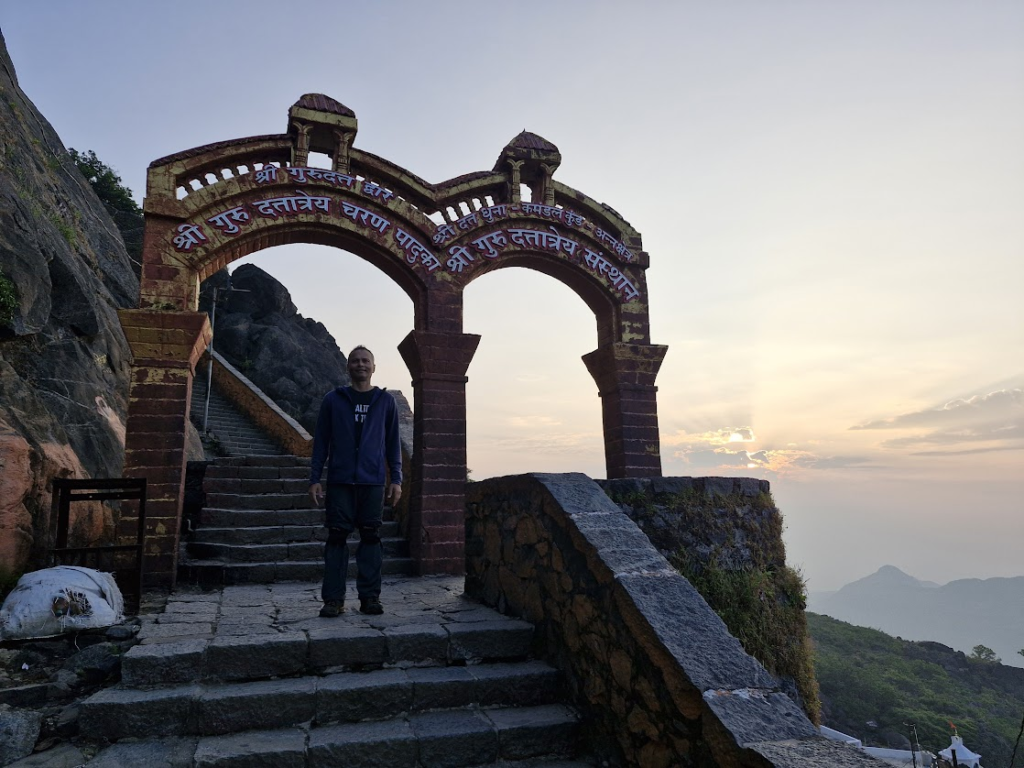
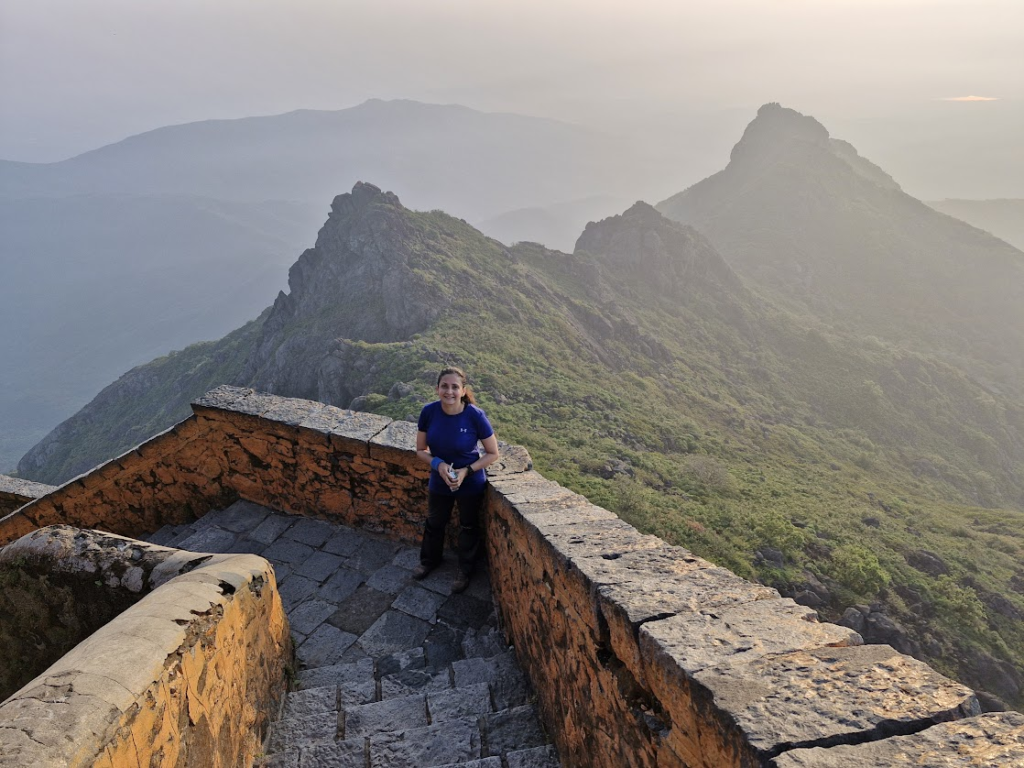
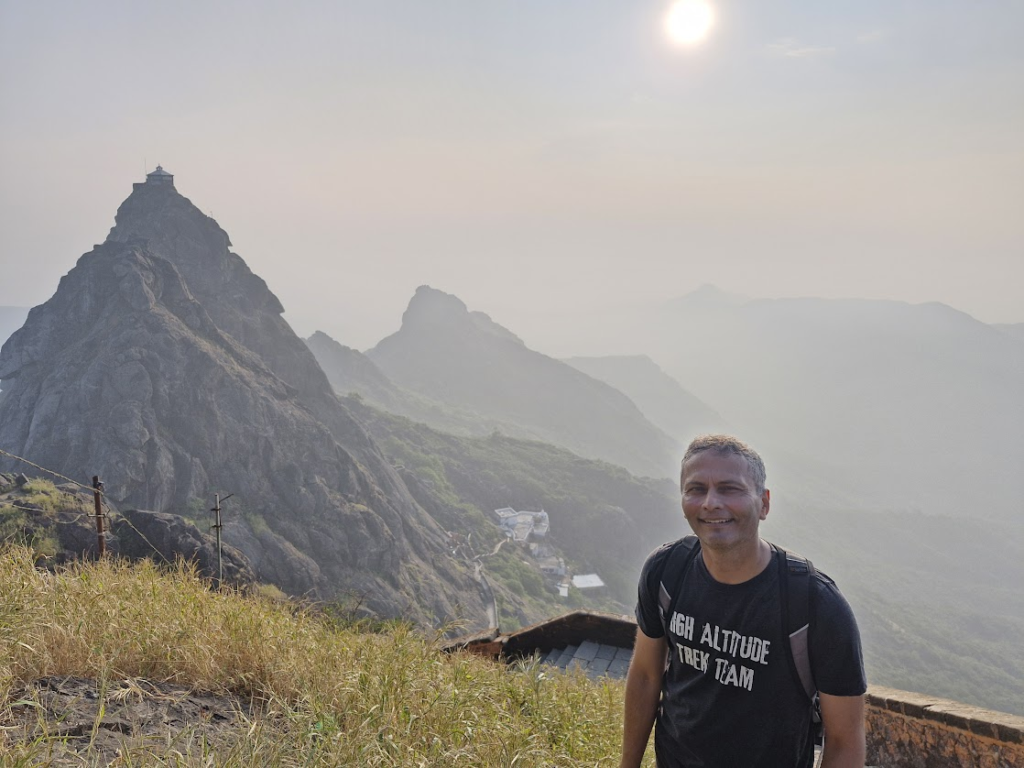
We did the darshan, then came back down. To protect my knees, I took the cable car down at around 8.15 am and was back at the bottom by 8.30 am. Anu decided to walk down and she came back from the Amba Mata temple in 40 mins (really flying down) by about 9 am.
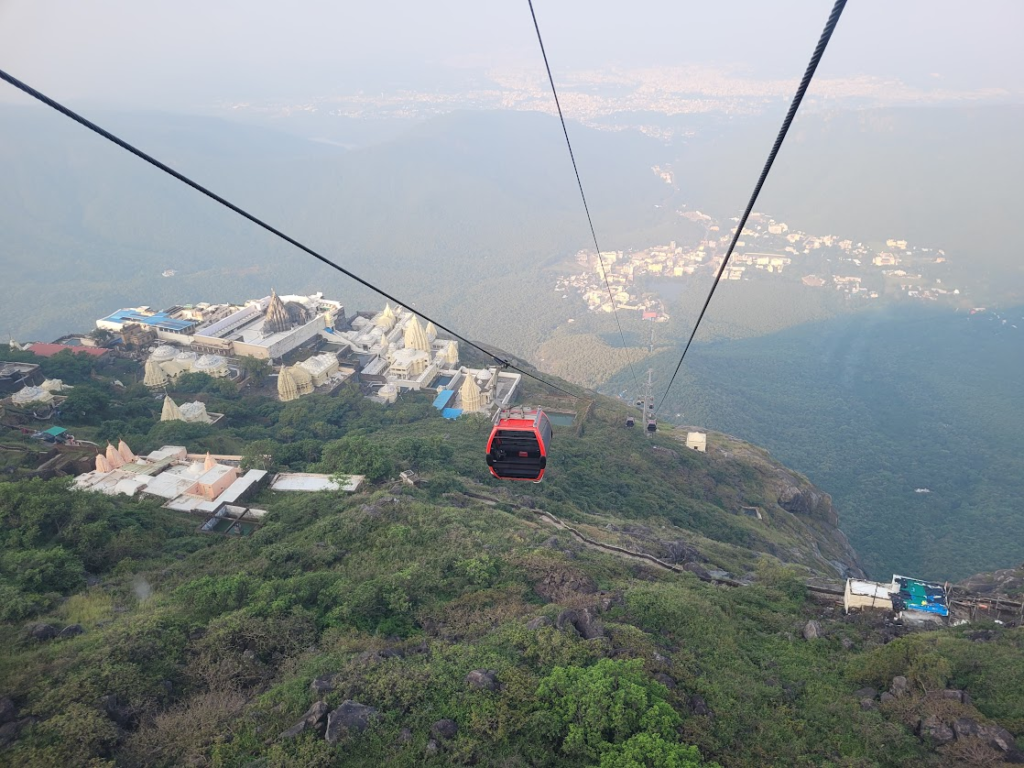
The climb was 11 km back and forth, 3,200 ft elevation gain. 10,000 steps. 2.45 hrs to climb, 1.40 hrs to come down, total 4.25 hrs.
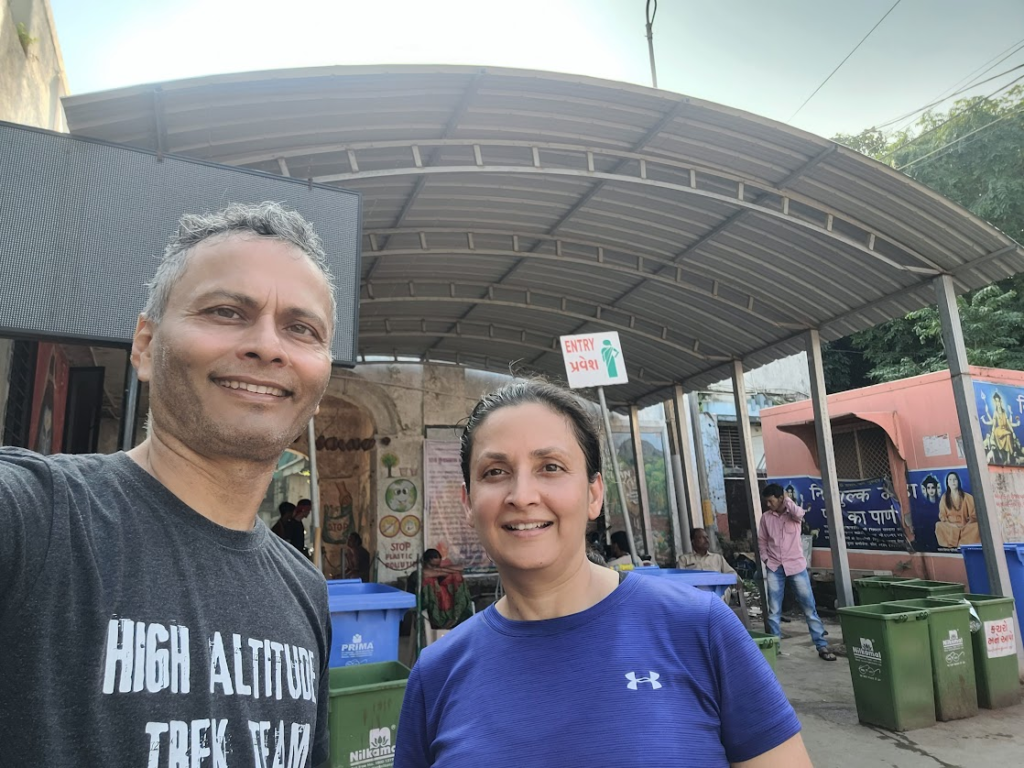
The scenery at Girnar is stunning. Proper steps all the way, well maintained. Plastic is strictly not allowed, so very clean. The cable car is very modern and is a great option. Girnar is definitely a must do for everyone.
We came back to the hotel around 9.30 am. We took a bath and took off around 10.30 am.
Our first sightseeing stop was Mahabat Khan Maqbara complex. It contains the Mahabat Maqbara and Bahauddin Maqbra, mausoleums in Junagadh. They were completed in 1892 and 1896 respectively and are dedicated to Mahabat Khan II, the Nawab of Junagadh State, and his minister Bahauddin Hussain Bhar respectively.
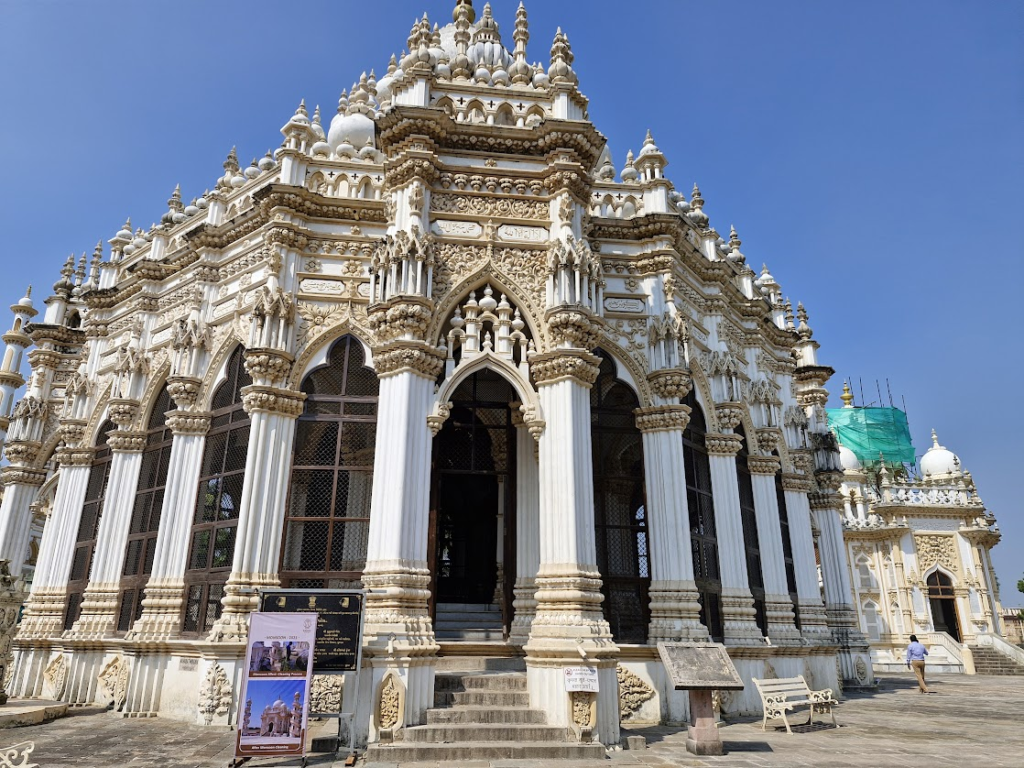
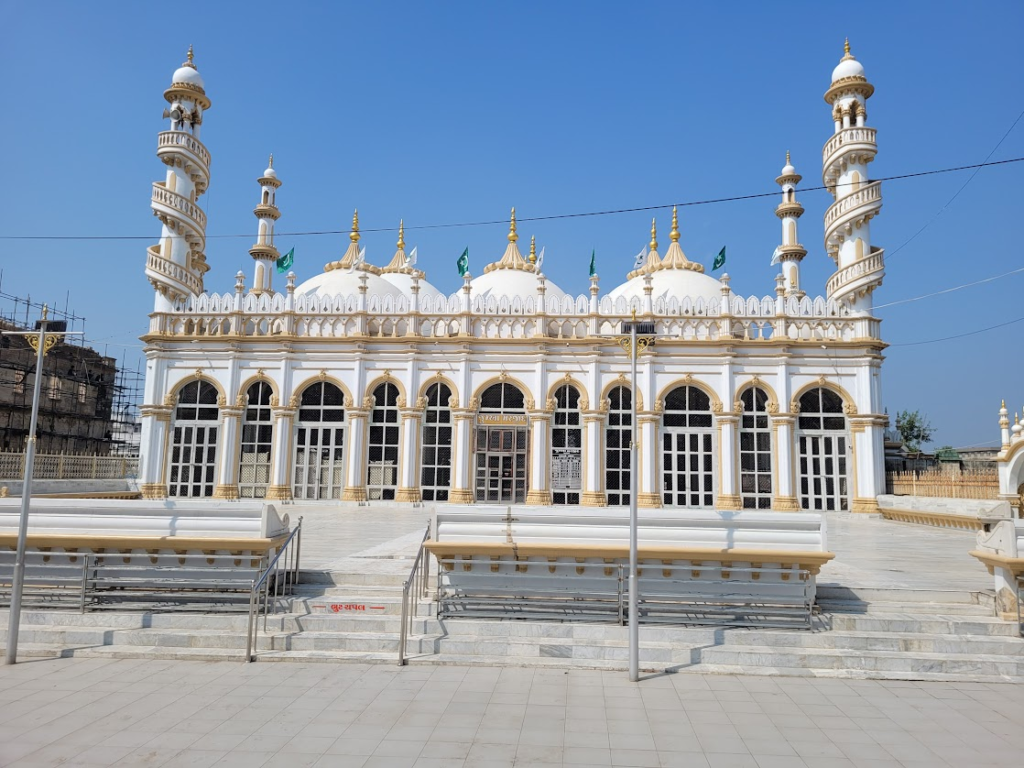
Uparkot fort is a huge fort in Junagadh. It was a fort built in the 9th century. The parapets on the east, where the place is commanded by higher ground, have been raised at least three times to give cover against the increasingly long range of projectiles. The entrance is beyond the town in the east wall, and consists of three gateways, one inside the other. The fort walls are from 60 to 70 feet high, forming a massive cluster of buildings. The inner gateway, a beautiful specimen of the Torana, has been topped by more later Indo-Saracenic work.
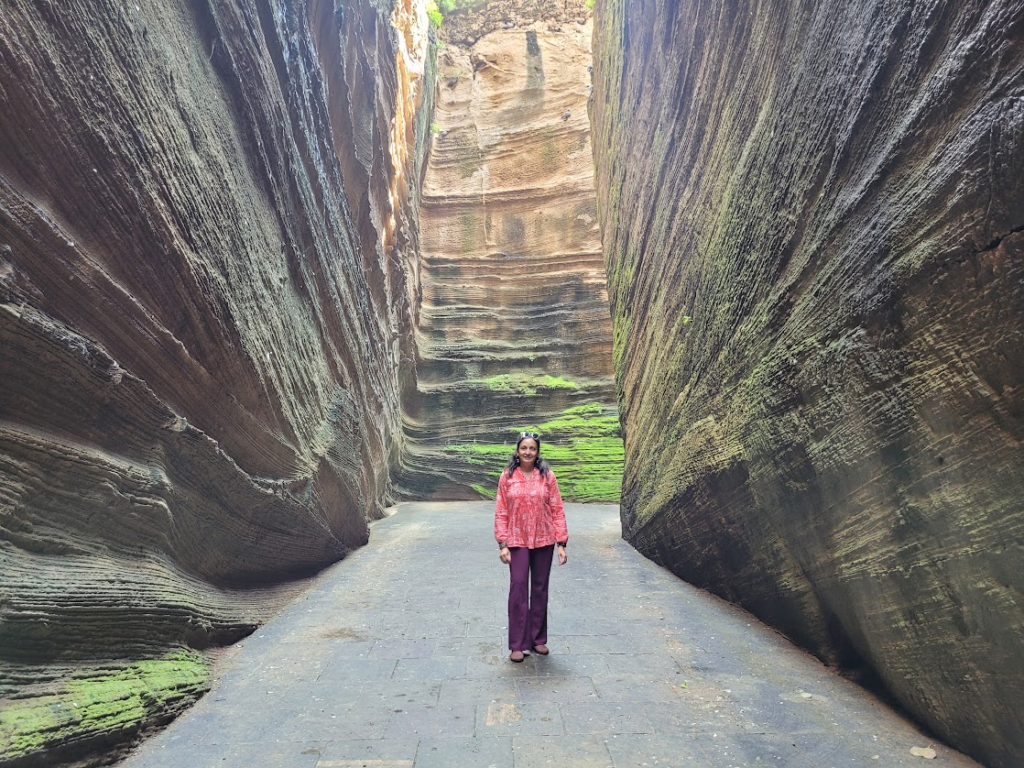

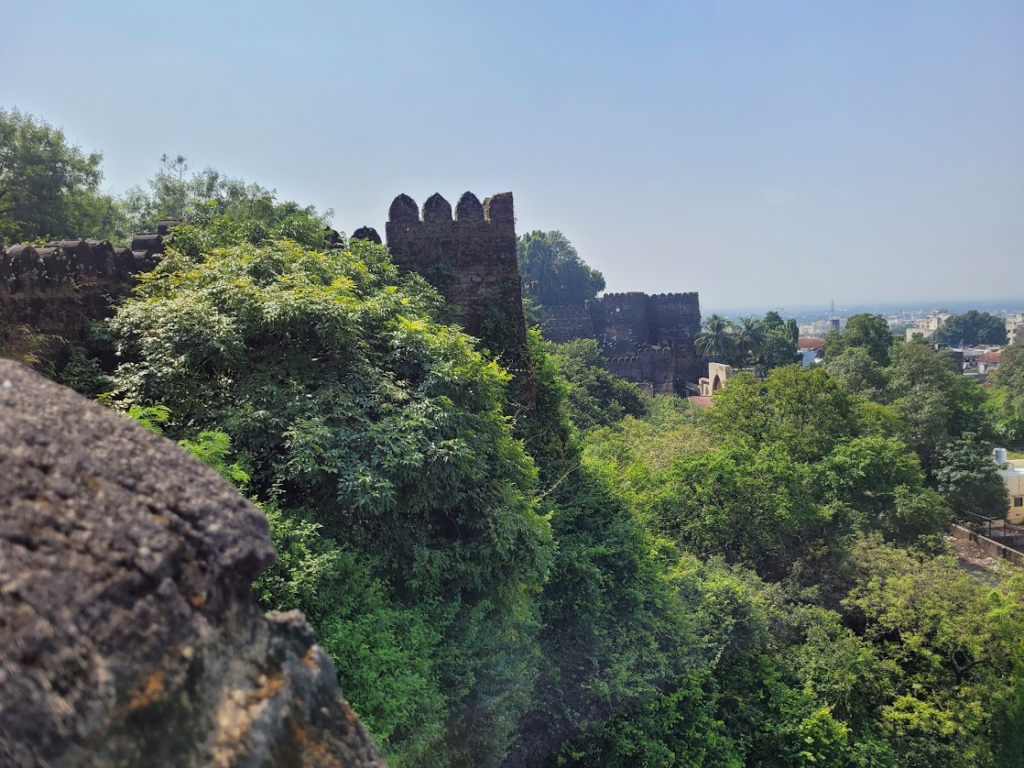
A place we could not see was the Ashok Shilalekh, a large boulder inscribed with Buddhist edicts dating to circa 250 BC, on the order of Emperor Ashoka. It was too hot and we decided to skip and proceed towards Rajkot.
On the way to Rajkot, we first stopped in Jetpur, which is known for wholesale textiles. We ate a a non-descript restaurant called Navjeevan. It turned out that it was a very popular restaurant and the Gujarati Thali was amazing.
We then stopped at Khodaldham, a Hindu temple complex dedicated to Khodal, a patron deity of Leuva Patel community. The temple was opened in 2017. It is a beautiful, clean temple with beautiful idols.
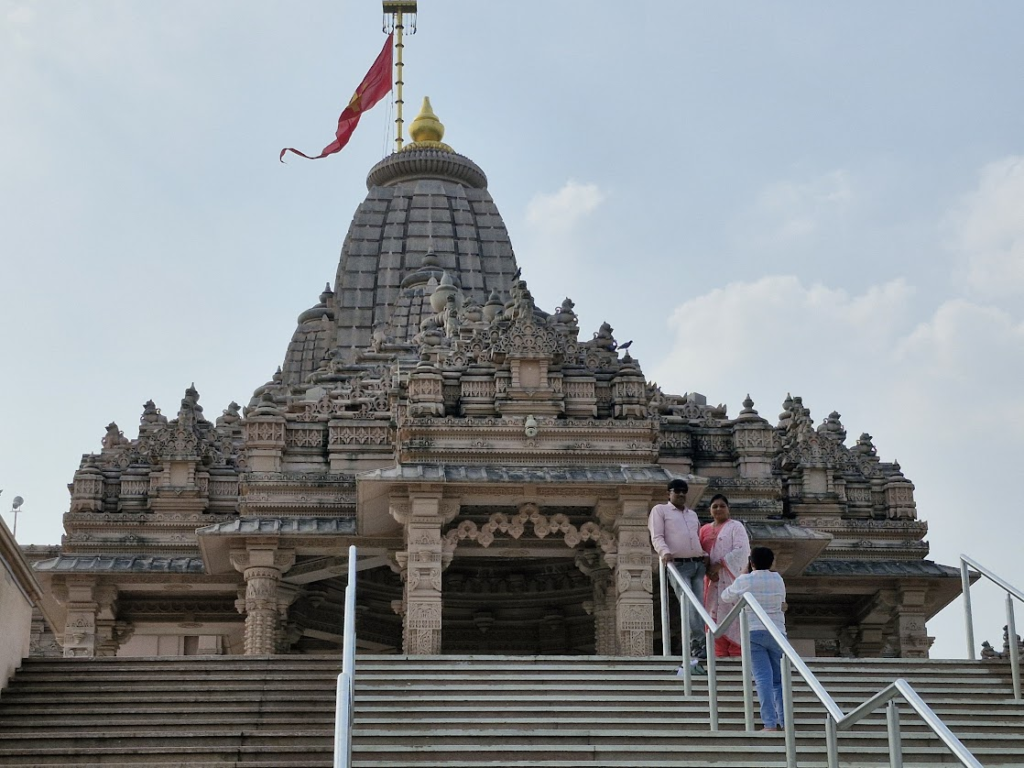
We proceeded to Jalaram Ashram in Virpur. Virpur was the workplace of Shri Jalaram Bapa, a famous saint in the 1800s. The main shrine of Jalaram Bapa is located at Virpur. The shrine is actually the house complex where Jalaram lived during his lifetime. The shrine houses the belongings of Jalaram and the deities of Rama, Sita, Lakshman and Hanuman worshipped by him. We were not allowed to take photos.
We drove to Rajkot and reached the Mahatma Gandhi museum in Rajkot at 4.45 pm. This was originally Kathiawar High School (also King Alfred High School) where Gandhi studied in Rajkot. The museum is superbly done with nearly 40 exhibit rooms. I do not agree with Mahatma Gandhi’s philosophy, but nevertheless, I had a great experience learning about his life. I finished around 6 pm and went back to Lata’s house.
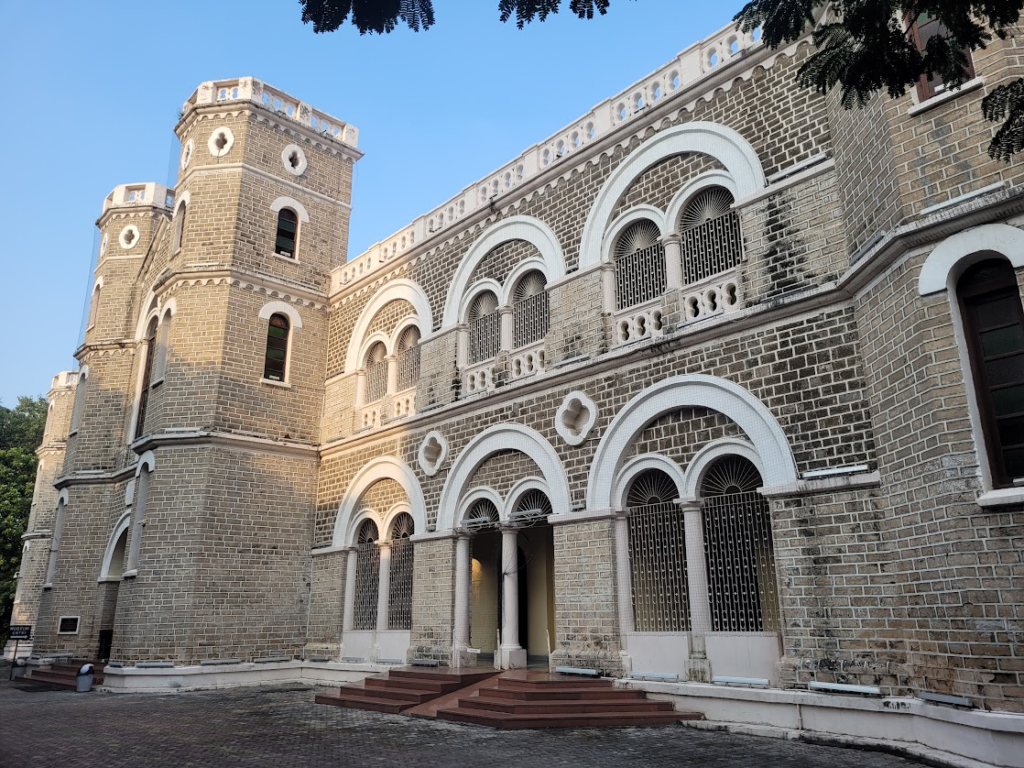
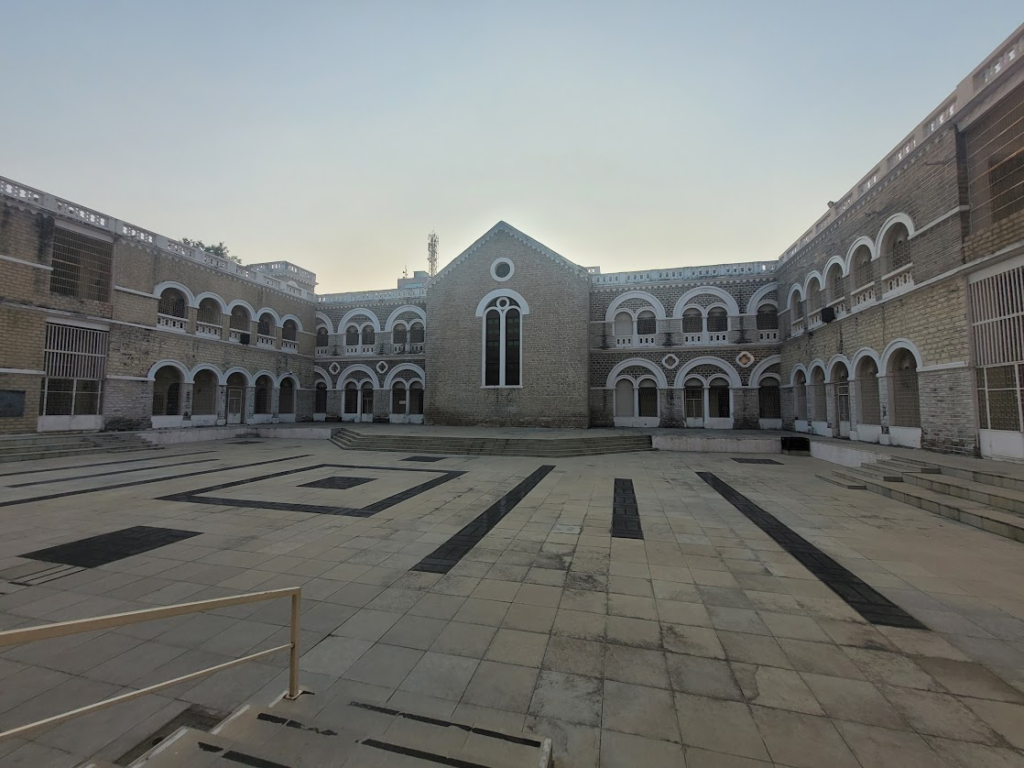
Lata had cooked a palak paneer and patra dinner which Anu and I enjoyed. We were tried from the Girnar climb and the full day tourism, so we slept at around 10 pm.
Day 6: Thu, Oct 24: Train to Ahmedabad
We took the 6.40 am Vande Bharat train from Rajkot to Ahmedabad, reaching Sabarmati Junction at 9.45 am.
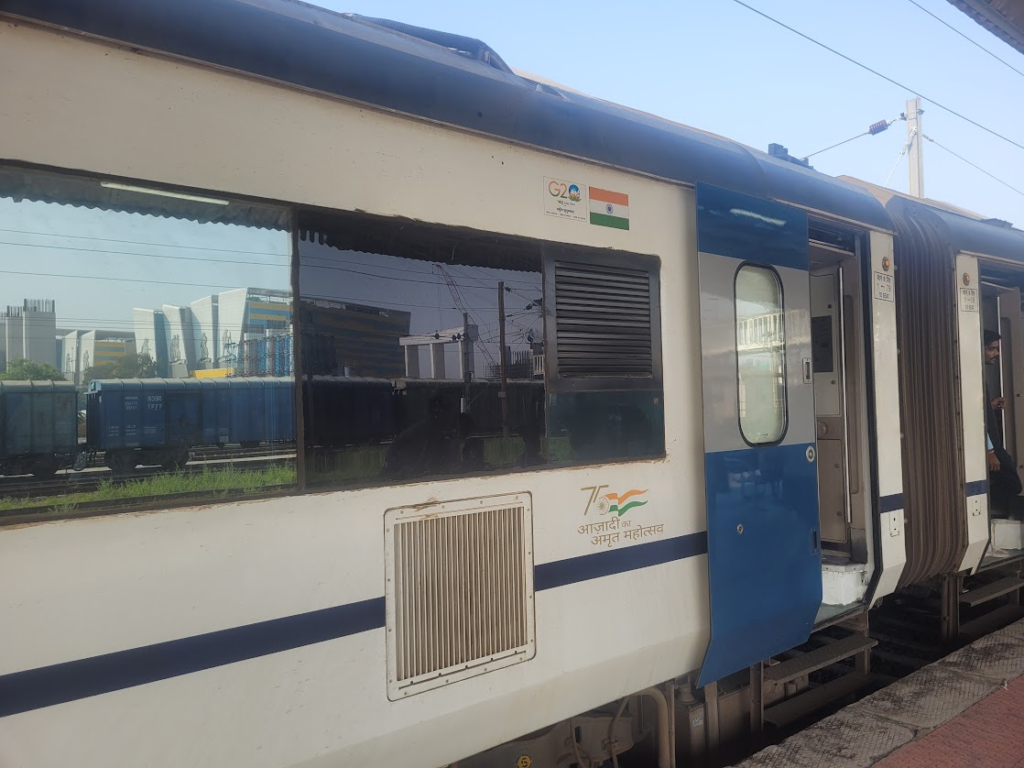
We went to my childhood friend Abhay Purandare’s home. We caught up with Abhay, Sheetal and their daughter Niyati after a long time. We had a really good time with.
We spent the whole day with them and caught the train at 6.40 on the next day from Ahmedabad to Udaipur for our yearly IIT Kanpur 1990 batch reunion. It was the end of a short but wonderful trip to Saurashtra.







